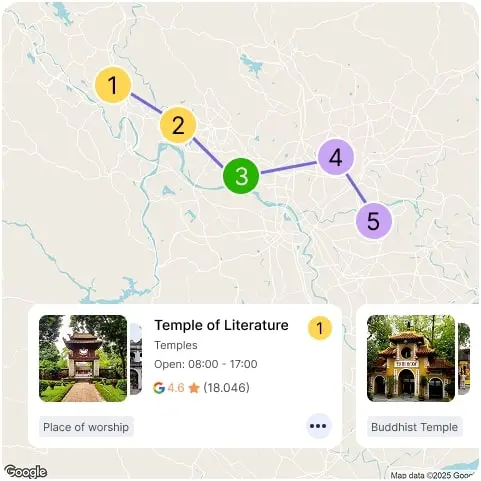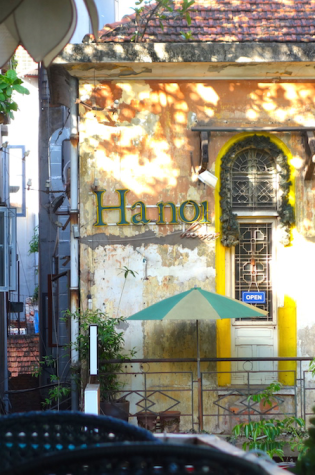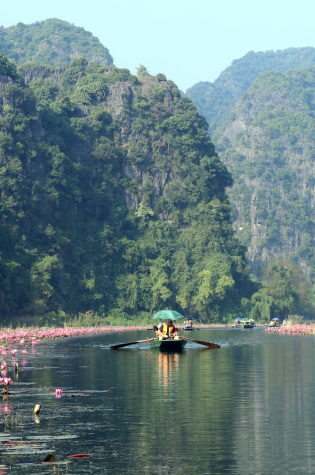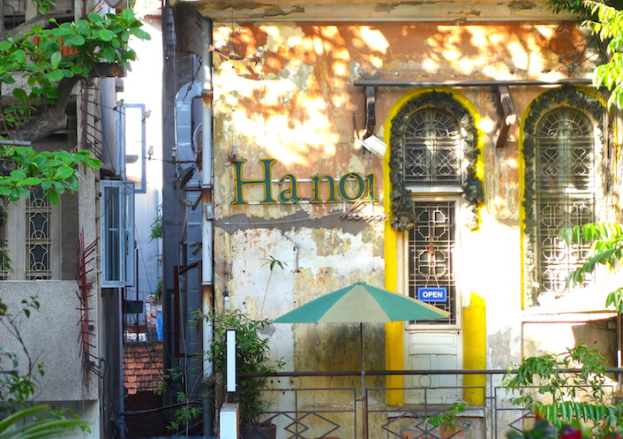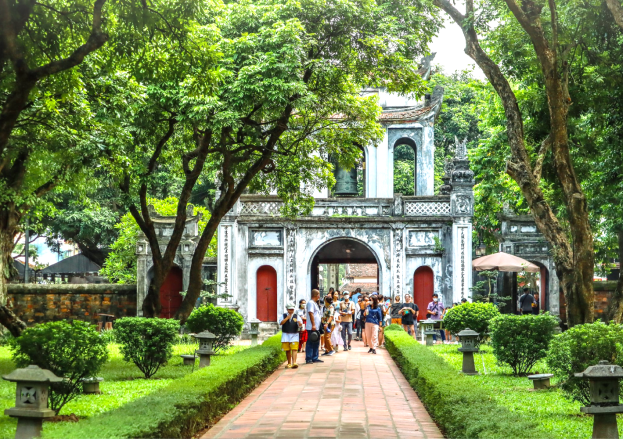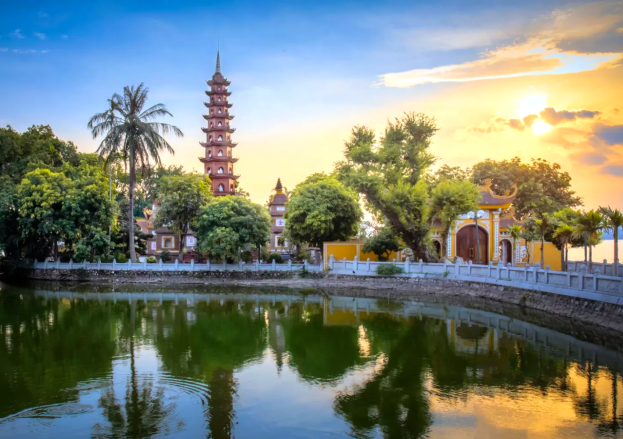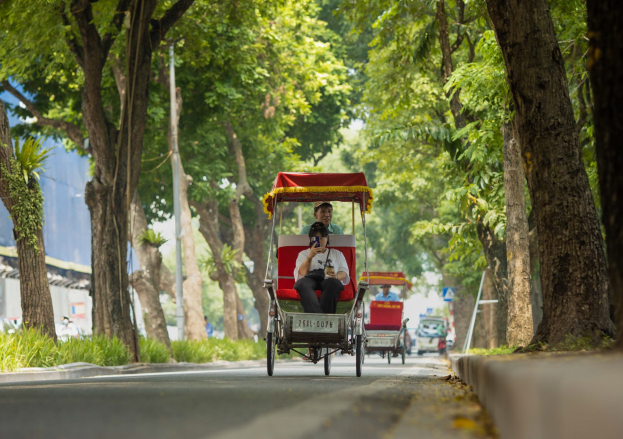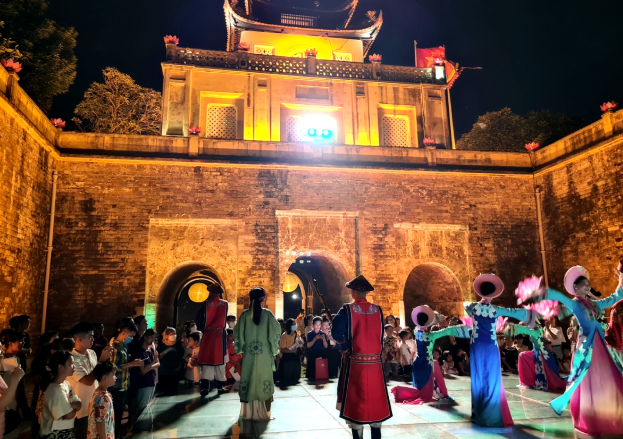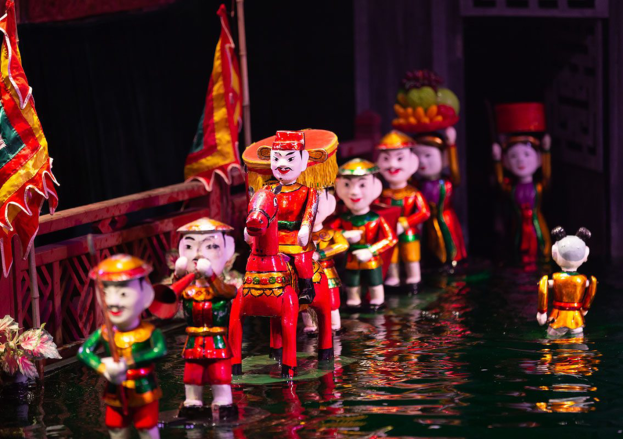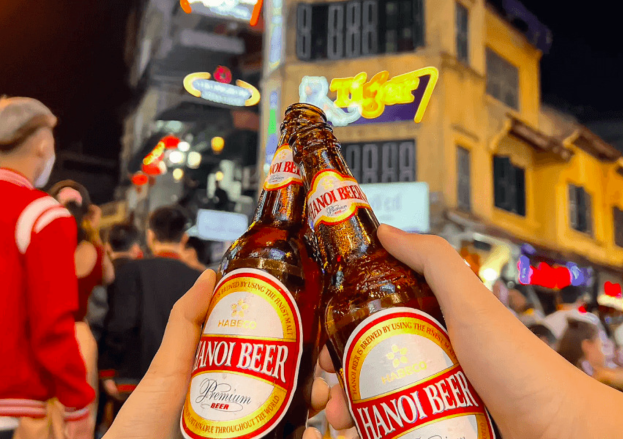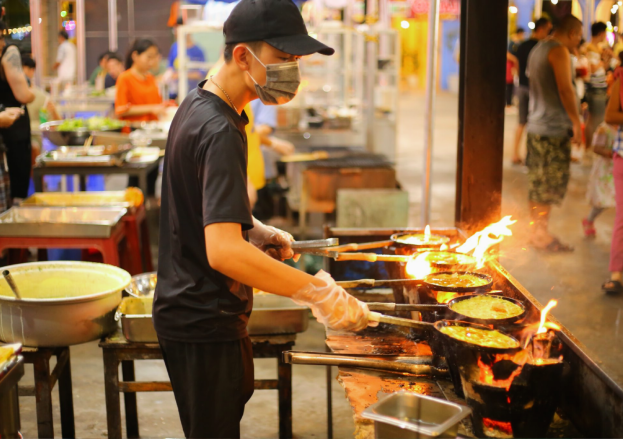
Sustainable Travel
Discover sustainable travel in Vietnam, where eco-friendly practices meet cultural preservation. Learn how responsible tourism helps protect the environment, support local communities, and ensure a positive impact for future generations.
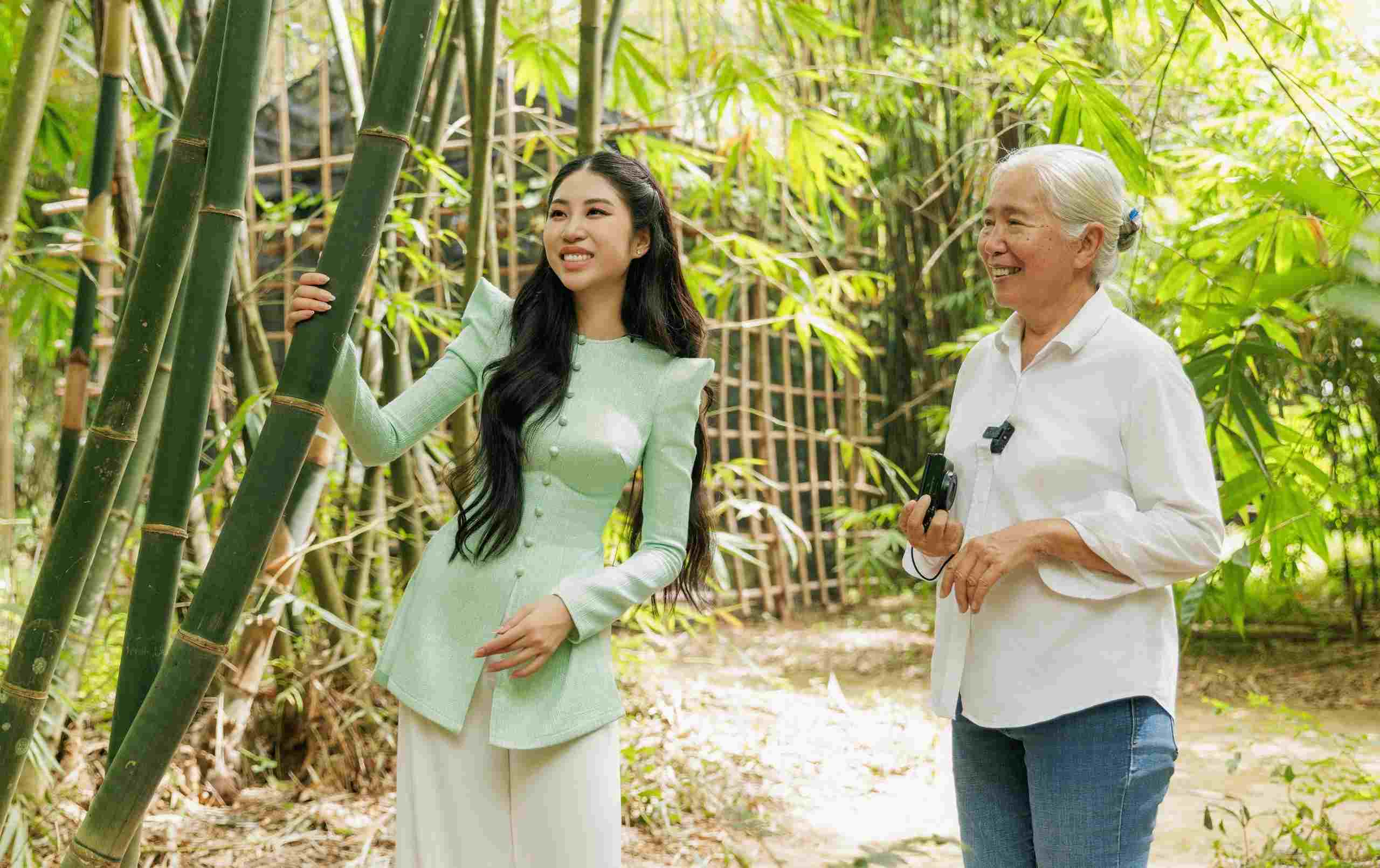
Step into the authentic Mekong Delta at Phu An Village
06 Sep, 2025
A Hidden Gem of the Mekong Delta While bustling floating markets and sprawling rice paddies often dominate the image of the Mekong Delta, Phu An Village offers something a little different. Located in Binh Duong Province, just a few hours’ drive from Ho Chi Minh City, this eco-village is renowned for its preservation of traditional Vietnamese architecture and lifestyles, as well as its commitment to environmental sustainability. Unlike commercialized tourist spots, Phu An Village has retained its rustic charm. Thatched houses surrounded by bamboo groves, lotus ponds reflecting the sky, and small winding paths lined with fruit trees make the village a peaceful retreat for travelers who want to escape the urban rush. Walking into Phu An, you will immediately notice the slower pace of life and the welcoming smiles of the locals, who are always ready to share their stories and traditions. A Living Museum of Traditional Architecture One of the most striking aspects of Phu An Village is its architecture. The village is often described as a “living museum” because of the way it has preserved centuries-old building techniques. The houses are made primarily from natural materials such as bamboo, palm leaves, and wood, reflecting the ingenuity of people who learned to adapt their living spaces to the delta’s watery environment. Roofs are designed to withstand heavy rains, while open layouts allow breezes to circulate naturally, reducing the need for modern air-conditioning. Each house is built on raised foundations to protect against floods, a reminder of the strong bond between the people and the river. For visitors, exploring these houses is like walking through history, offering a glimpse into how generations of Mekong Delta families have lived in harmony with nature. The Bamboo Conservation Project Phu An Village is also home to an internationally recognized bamboo conservation project. Known as the Phu An Bamboo Village, it houses one of the largest collections of bamboo species in Southeast Asia. The project was initiated by Vietnamese scientists and supported by French partners with the goal of preserving bamboo biodiversity, promoting sustainable development, and reviving the cultural significance of bamboo in Vietnamese life. Bamboo, often called the “green steel” of Asia, has long been a vital part of Vietnamese culture. From construction and handicrafts to food and medicine, it has countless uses. At Phu An Village, visitors can see over 1,500 species of bamboo growing in carefully maintained gardens. Guided tours explain the ecological role of bamboo, its economic importance, and its symbolic meaning in Vietnamese traditions. For eco-conscious travelers, this aspect of the village makes it a must-visit destination. Immersive Cultural Experiences Beyond its natural and architectural beauty, Phu An Village invites travelers to experience the daily life of the Mekong Delta in a hands-on way. Unlike typical sightseeing trips, here you can roll up your sleeves and take part in activities that locals have been doing for centuries. Traditional Farming: Visitors can try planting rice seedlings, harvesting vegetables, or learning how to irrigate fields using age-old techniques. These activities not only provide insight into the hard work behind every grain of rice but also connect travelers more deeply with the land. Cooking Classes: Mekong Delta cuisine is renowned for its freshness and flavor, often using herbs, river fish, and tropical fruits. At Phu An, you can join cooking sessions where local chefs teach you how to prepare traditional dishes such as "bánh xèo" (crispy rice pancakes) or "canh chua" (sour fish soup). Handicraft Workshops: Bamboo weaving, conical hat making, and mat weaving are just some of the crafts you can learn from skilled artisans. These workshops not only preserve traditional skills but also provide a sustainable source of income for villagers. By participating in these activities, travelers don’t just observe—they become part of the village’s story. A Green Oasis for Nature Lovers For those seeking tranquility, Phu An Village is also a haven for nature lovers. The village’s design emphasizes harmony with the environment, and its gardens and waterways create a serene landscape. Walking through groves of bamboo and fruit trees, or taking a boat ride along the small canals, you will encounter a wide variety of flora and fauna. Birds chirp overhead, dragonflies hover near the water, and butterflies dance among the flowers. The lotus ponds are particularly enchanting. In summer, when the blossoms are in full bloom, the sight of pink petals unfurling under the sun is breathtaking. For many visitors, moments like these—quietly drifting on a boat, surrounded by the fragrance of lotus—become the highlight of their journey. What makes Phu An Village unique is its commitment to sustainability. The village is not designed as a commercial tourist attraction but rather as a community project that balances conservation, education, and tourism. Efforts are made to minimize environmental impact, such as using renewable materials, managing waste responsibly, and encouraging eco-friendly practices among visitors. Local guides emphasize the importance of protecting biodiversity and preserving traditions. Proceeds from tourism are reinvested into conservation and community development, ensuring that the benefits are shared by the people who call the village home. This model of sustainable tourism is not only inspiring but also essential for the future of the Mekong Delta, which faces challenges from climate change and rapid urbanization. Practical Information for Visitors Visiting Phu An Village is a rewarding experience, but to make the most of your trip, it’s useful to keep a few things in mind: Location: The village is about 35 kilometers north of Ho Chi Minh City, making it an ideal day trip for those who want a break from the city. Best Time to Visit: The dry season (December to April) is generally the most comfortable time to explore, though the lush greenery of the rainy season also has its charm. What to Bring: Comfortable walking shoes, light clothing, a hat, sunscreen, and insect repellent are recommended. If you plan to join farming activities, be prepared to get a little muddy! Respect Local Culture: Phu An is a living community, so showing respect to villagers, dressing modestly, and following local customs will enhance your experience. In an age where many destinations are becoming increasingly commercialized, Phu An Village offers something rare: authenticity. It’s a place where tradition and nature are not staged for tourists but are genuinely lived and celebrated every day. Whether you are a history enthusiast, an eco-traveler, a culture seeker, or simply someone looking for peace, Phu An Village has something meaningful to offer. Walking through its bamboo groves, tasting dishes made from freshly harvested ingredients, or learning how villagers have adapted to life in the delta for centuries, you will leave with more than just photographs. You will carry with you a deeper understanding of Vietnam’s cultural heritage and the importance of living in balance with nature.
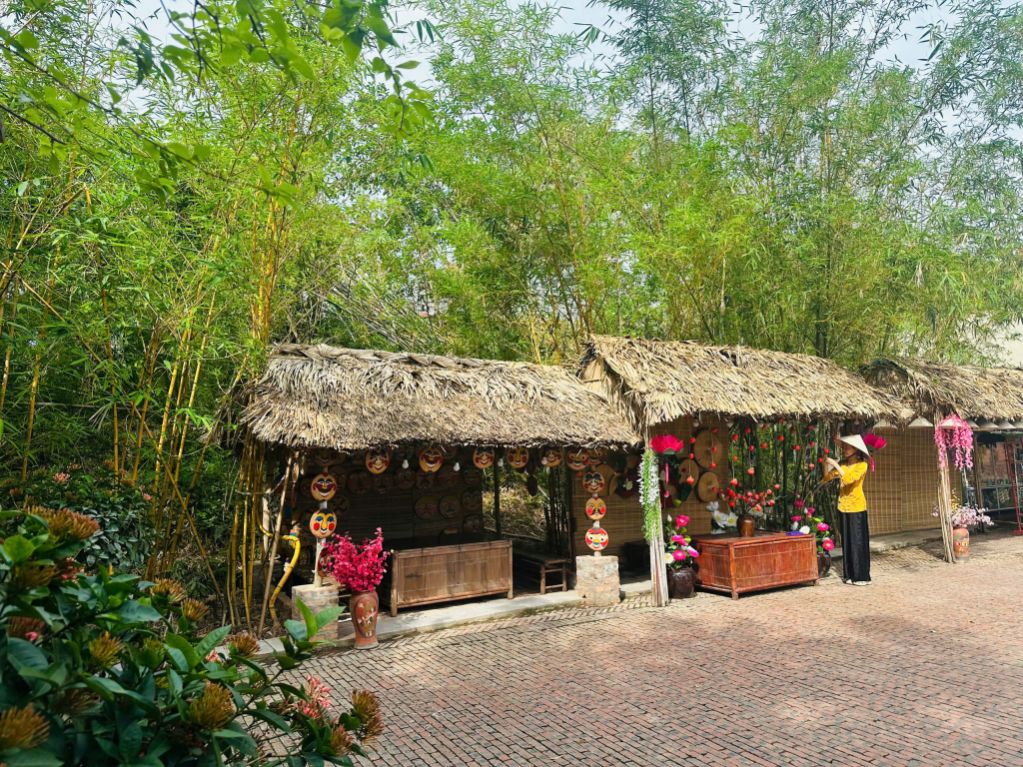
Experience daily life and timeless traditions in Dong Trieu Village
06 Sep, 2025
A Glimpse into Dong Trieu’s Heritage Dong Trieu has long been known as a land of rich history and culture. Once a cradle of the Tran Dynasty, it preserves a remarkable collection of relics that reveal the grandeur of an era when Vietnam thrived in both political and cultural achievements. Ancient temples, pagodas, and historical sites scattered throughout the village narrate stories of resilience, devotion, and craftsmanship. Walking through its quiet lanes, you can feel the weight of time and tradition lingering in the air. At the heart of Dong Trieu’s cultural pride is the Tran Dynasty relic site, which includes temples dedicated to kings and generals who made significant contributions to the nation. These places are not just tourist attractions but living cultural spaces where locals still hold festivals, pay respects, and keep traditions alive. Visiting during festive seasons offers an extraordinary chance to witness vibrant processions, folk performances, and rituals passed down through centuries. The Pulse of Daily Life What makes Dong Trieu particularly captivating is the chance to observe and participate in the daily lives of its people. Unlike bustling tourist hubs, the village retains a slow pace of life where agriculture and handicrafts remain central to community livelihoods. Farmers still work the rice fields much as their ancestors did, while artisans dedicate their days to preserving traditional crafts. Walking through the village in the early morning, you’ll hear the rhythmic sounds of tools in workshops and the chatter of markets where locals gather to exchange produce. These daily rituals offer an intimate look into the values of hard work, family, and community that define village life. Travelers who spend time with local families can gain a deeper appreciation for the way customs and traditions shape everyday routines. Dong Trieu’s Famous Ceramic Craft Among the many treasures of Dong Trieu, its ceramic craft stands out as a symbol of artistry and heritage. For centuries, Dong Trieu has been one of the most important ceramic production centers in northern Vietnam. Skilled artisans here are known for their meticulous craftsmanship, creating products that combine functionality with aesthetic beauty. The ceramics of Dong Trieu are not only household items but also works of art adorned with intricate patterns and traditional motifs. From vases and teapots to decorative plates, each piece tells a story of cultural identity. Visitors can step inside workshops to watch artisans shaping clay, firing kilns, and painting designs with steady hands. Some studios even allow guests to try their hand at the potter’s wheel, offering a hands-on experience that makes the visit unforgettable. Culinary Traditions Worth Savoring No exploration of daily life in Dong Trieu would be complete without tasting its culinary specialties. The local cuisine reflects the agricultural richness of the area, with dishes prepared from fresh ingredients grown in surrounding fields. From simple home-cooked meals to traditional festive foods, each dish carries the flavors of heritage. One of the highlights is "bánh gai", a traditional cake made of glutinous rice, black ramie leaves, and mung bean filling. It is a delicacy often prepared during festivals and family gatherings, symbolizing prosperity and togetherness. Other dishes such as rice porridge with river fish, braised pork, and pickled vegetables showcase the harmony of flavors typical of Vietnamese cuisine. For visitors, sharing a meal with a local family becomes not just about food but also about experiencing hospitality and the cultural importance of dining together. Festivals and Cultural Celebrations Dong Trieu’s festivals breathe life into its traditions, making it a vibrant place to visit at any time of year. The Tran Dynasty Temple Festival, held annually, is one of the most significant events. During this celebration, villagers gather to honor their ancestors, perform rituals, and enjoy cultural performances that include traditional music, lion dances, and folk games. These festivals are more than entertainment; they are powerful reminders of the community’s respect for history and its efforts to keep traditions alive. Visitors who join in these celebrations not only witness cultural expressions but also feel the sense of unity and identity that defines Dong Trieu. Natural Charm Surrounding the Village Beyond its cultural richness, Dong Trieu is surrounded by landscapes of serene beauty. Green rice paddies stretch across the countryside, framed by rolling hills and tranquil streams. Early mornings reveal mist hovering over fields, while evenings bring the golden glow of sunset over the village rooftops. For travelers who seek peace and connection with nature, cycling through the countryside or taking a leisurely walk along village paths offers moments of reflection and relaxation. The blend of natural charm and cultural depth makes Dong Trieu a destination that appeals to both the soul and the senses. Dong Trieu is not just about sightseeing; it is about engaging with a way of life that has endured through centuries. Visiting the village means stepping into a living museum where history, traditions, and daily activities coexist harmoniously. It is a chance to slow down, escape the noise of modern life, and reconnect with values rooted in community and heritage. For travelers who crave authenticity, Dong Trieu offers experiences that go beyond surface-level tourism. Whether it’s joining a pottery workshop, tasting traditional foods, or attending a local festival, every encounter deepens your understanding of Vietnam’s cultural identity. Practical Tips for Travelers Best Time to Visit: The ideal time is during spring and autumn when the weather is pleasant and festivals often take place. Getting There: Dong Trieu is located about 60 kilometers from Ha Long City and can be reached by car or bus. It is also accessible from Hanoi with a journey of around 2–3 hours. Where to Stay: While Dong Trieu itself offers limited accommodations, nearby towns and homestays provide comfortable options for those seeking immersion in local life. What to Bring: Comfortable walking shoes, a camera to capture cultural moments, and an open heart to embrace new experiences. Dong Trieu Village is a hidden gem where daily life and timeless traditions unfold before your eyes. From ancient relics to vibrant crafts and heartfelt hospitality, it offers a journey that transcends ordinary travel. By visiting, you not only witness the preservation of heritage but also become part of the story that keeps these traditions alive. For anyone seeking to explore Vietnam beyond its well-trodden paths, Dong Trieu promises a cultural adventure both authentic and unforgettable.
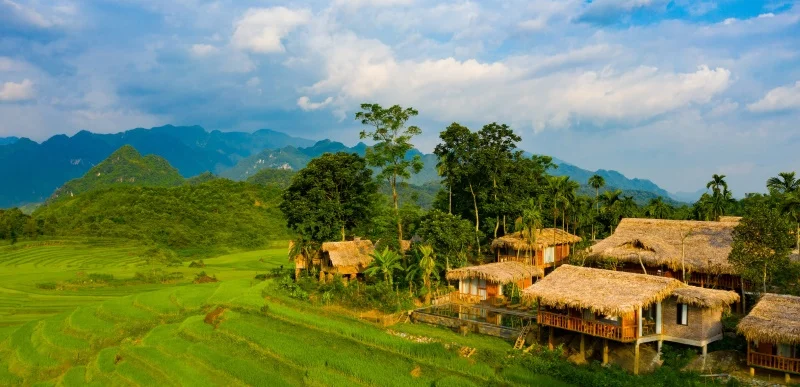
Immersive cultural activities at Pu Luong Eco-Village
06 Sep, 2025
A Gateway to Local Heritage Pu Luong Eco-Village sits at the heart of an area home to Thai and Muong ethnic communities, each with a rich cultural identity. Instead of offering a commercialized version of local traditions, the village focuses on immersive activities that allow visitors to connect with people and stories in meaningful ways. Every experience, from cuisine to craft, is designed not only to entertain but also to educate and inspire respect for cultural heritage. One of the highlights at Pu Luong Eco-Village is the opportunity to join handicraft workshops. Skilled artisans open their homes and workshops to visitors, guiding them through the delicate processes of weaving, embroidery, and bamboo crafting. For generations, Thai women have woven brocade fabrics with natural dyes, creating intricate patterns that carry symbolic meanings. Participating in such a workshop, travelers can try their hand at setting up the loom, learning the rhythm of weaving, and even creating a small souvenir to take home. Bamboo crafting is another engaging activity, where visitors can transform raw bamboo into everyday objects such as baskets, fans, or small tools. These workshops not only showcase traditional craftsmanship but also support local livelihoods, as artisans earn a sustainable income by sharing their knowledge. Culinary Journeys with Local Families Food is often the quickest way to understand a culture, and Pu Luong Eco-Village makes sure visitors experience this through hands-on cooking classes. Guests are invited to local homes where families teach them how to prepare traditional dishes like com lam (bamboo-tube rice), grilled mountain chicken, or wild vegetables collected from nearby forests. The process begins at the village market, where travelers join hosts to select fresh produce, herbs, and spices. This excursion becomes a cultural exchange as visitors learn how certain ingredients are tied to local rituals and daily practices. Cooking together is intimate and joyful, breaking down barriers between cultures. The shared meal afterward, enjoyed with local rice wine, becomes more than just food—it is a celebration of hospitality and community. Traditional Dance and Music Performances Evenings in Pu Luong Eco-Village often come alive with the sounds of xòe dances and folk music performed by Thai villagers. These performances are not staged shows in large auditoriums but rather intimate gatherings where visitors are invited to join the circle dance around a bonfire. The music is played on traditional instruments such as the khèn (a type of bamboo mouth organ) or drums, each note echoing centuries of cultural memory. Participating in these dances is a way for travelers to feel included in the community, while also understanding the symbolic importance of music and movement in local festivals and ceremonies. Life in Pu Luong Eco-Village revolves around terraced rice fields and lush gardens, and visitors have the chance to experience this lifestyle firsthand. Joining local farmers during planting or harvesting seasons is one of the most rewarding cultural activities. Travelers may help transplant rice seedlings, plow the fields with water buffalo, or harvest golden rice stalks under the sun. These activities go beyond physical labor—they embody the spirit of resilience, cooperation, and respect for the land that defines the community’s relationship with nature. It also allows visitors to witness how traditional farming practices are sustained in harmony with the environment, a valuable lesson in sustainable living. Exploring Local Markets The weekly markets near Pu Luong Eco-Village are vibrant cultural events where villagers gather not only to trade goods but also to socialize. Walking through the market, visitors encounter stalls selling handwoven textiles, organic produce, herbal remedies, and street food unique to the region. Markets are also places where cultural diversity becomes visible, with Thai, Muong, and Kinh people all contributing their products and practices. Visitors can engage with vendors, learn about traditional remedies, or try local snacks. These encounters offer glimpses into the everyday lives of the people, enriching the travel experience beyond sightseeing. Another layer of Pu Luong’s cultural immersion comes from exploring the spiritual world of the communities. Local shamans and elders sometimes share stories of ancient rituals, nature worship, and festivals that mark the agricultural calendar. Ceremonies dedicated to the rice goddess or spirits of the forest reveal the deep connection between culture and nature. While some rituals are private, visitors may be invited to observe or participate in certain community gatherings. These moments create a profound understanding of how spirituality shapes daily life and sustains cultural continuity across generations. What sets Pu Luong Eco-Village apart is the way it integrates culture with eco-tourism. Instead of presenting cultural activities as side attractions, they are placed at the heart of the visitor experience. Every activity—whether weaving, cooking, farming, or dancing—reinforces the idea that cultural preservation and environmental sustainability go hand in hand. This approach ensures that tourism benefits local communities, prevents cultural erosion, and creates authentic connections between hosts and guests. It also provides visitors with something far richer than a typical vacation: a sense of belonging and shared humanity. Visiting Pu Luong Eco-Village is a journey into the cultural heart of northern Vietnam, where traditions are not only preserved but also shared in meaningful ways. Immersive cultural activities—from weaving and cooking local specialties showcasing Vietnam cuisine, to farming and dancing—allow travelers to step into the rhythms of daily life. Surrounded by the stunning nature of Vietnam, each experience creates memories that last long after the trip ends. More than a destination, Pu Luong becomes a l
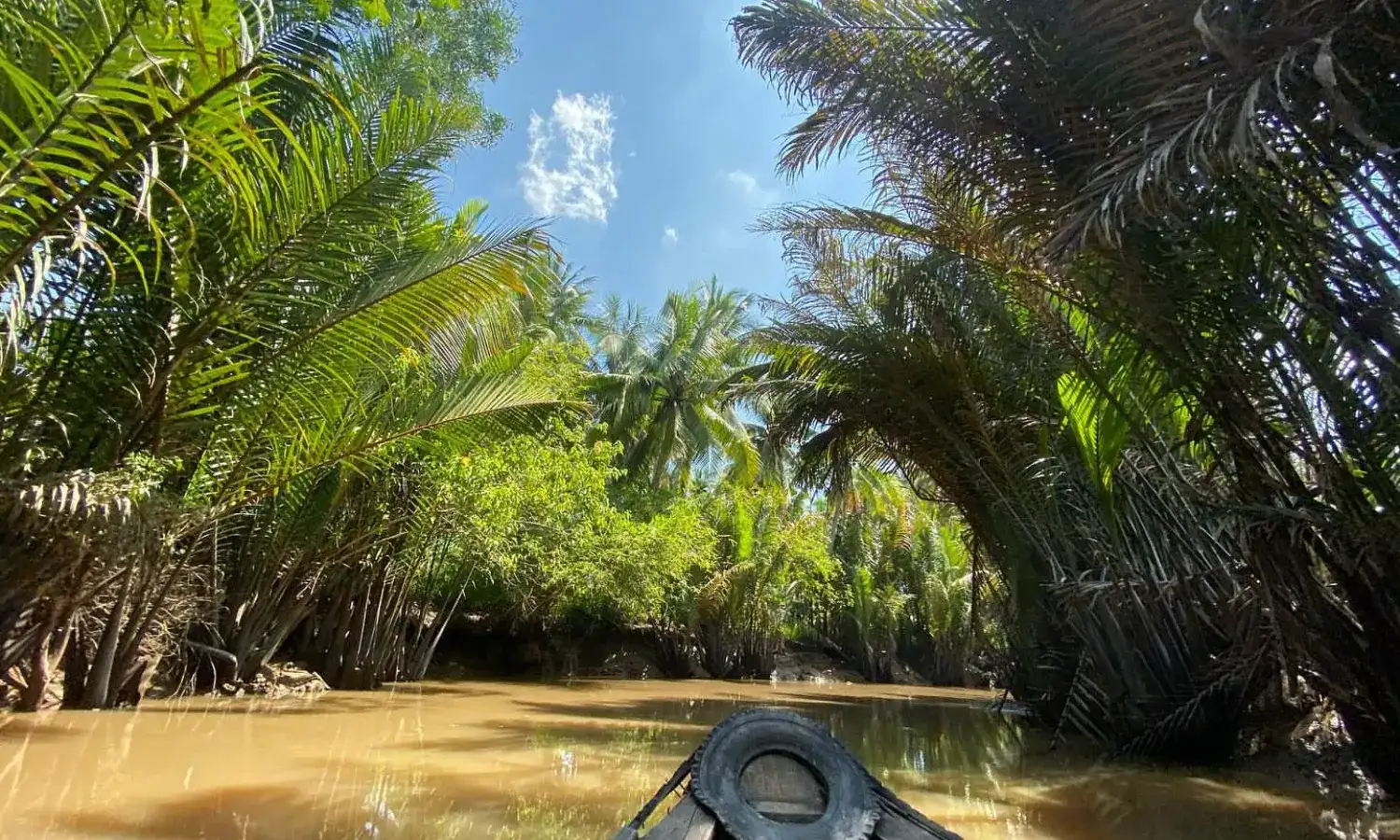
Cai Be Eco-Village – A journey through the heart of the Mekong
06 Sep, 2025
The Charm of Cai Be and Its Surroundings Cai Be, located in Tien Giang Province, is one of the Mekong Delta’s most vibrant towns. Known for its floating market, fertile orchards, and rich cultural traditions, the town represents the very essence of southern Vietnam. Cai Be Eco-Village was created not only as a tourist attraction but also as a cultural preservation project, allowing visitors to experience the Delta’s way of life in a sustainable and respectful manner. The moment you arrive, you are greeted by a serene countryside setting: green rice paddies stretching endlessly, narrow canals lined with water coconut palms, and wooden houses shaded under fruit trees. The air carries the scent of blossoms mixed with the earthy aroma of the river, instantly creating a sense of peace and escape. Exploring the Eco-Village At Cai Be Eco-Village, travelers can take part in a wide range of activities that reveal the daily lives of local people. A guided walk through the village is often the first introduction, where visitors are shown traditional wooden houses, small family workshops, and fruit orchards. Each stop tells a story: how families pass down their homes from one generation to the next, how artisans craft rice paper by hand, or how farmers nurture trees that bear fruit for decades. One of the highlights is a boat ride along the small canals, known locally as rạch. Sitting in a wooden sampan paddled by local women in traditional conical hats, you glide past water hyacinths and hear the quiet hum of cicadas. The calm waters reflect the sky, creating a dreamy, almost timeless atmosphere. This is the Mekong Delta at its purest—tranquil, intimate, and endlessly beautiful. Immersive Cultural Experiences Cai Be Eco-Village also offers opportunities for hands-on cultural immersion. Visitors can join cooking classes that introduce the secrets of Mekong cuisine, where fresh ingredients from the village’s gardens are used to prepare dishes such as caramelized fish in clay pot, fresh spring rolls, or sour fish soup with tamarind. Preparing and then enjoying these dishes together gives a sense of connection not only to the food but also to the lifestyle of the people who have perfected these recipes over centuries. Another engaging activity is traditional folk music performances. "Đờn ca tài tử", recognized as an Intangible Cultural Heritage by UNESCO, is often performed for guests. The soothing notes of the guitar-like "đàn kìm" and the melancholic voice of the singers capture the emotions of the land—its joys, struggles, and harmony with nature. Sitting under a thatched roof, listening to this soulful music, you gain a deeper appreciation of how culture and nature are intertwined in the Delta. The Richness of the Orchards One cannot talk about Cai Be without mentioning its orchards. The fertile soil of the Mekong Delta makes it one of the most abundant fruit-growing regions in Vietnam. At Cai Be Eco-Village, guests are invited to walk through lush orchards bursting with tropical fruits: mangoes, rambutans, jackfruits, longans, and durians, depending on the season. Visitors can pick fruits directly from the trees and savor them fresh, often while listening to the farmers share stories about their lives and agricultural practices. This personal connection transforms a simple fruit tasting into an exchange of culture and hospitality. It also underscores the importance of the river, whose waters sustain both people and crops. Life Along the River The Mekong River is the lifeblood of Cai Be. Beyond the eco-village, travelers often take excursions to see Cai Be’s famous floating market. Although smaller than in the past, the market still reflects the trading culture of river communities. Boats loaded with fruits, vegetables, and household goods create a colorful, bustling scene on the water. Sellers advertise their goods by hanging samples from tall bamboo poles, making it easy to spot from afar. This river-based lifestyle emphasizes how deeply the Mekong shapes daily routines. Houses are built on stilts along the banks, children commute to school by boat, and families gather for meals overlooking the water. Cai Be Eco-Village captures this essence by bringing guests closer to the river, allowing them to understand not just its beauty but also its significance for survival and prosperity. One of the most admirable aspects of Cai Be Eco-Village is its focus on sustainability. Unlike commercial tourist sites, the eco-village operates with respect for local communities and the environment. Many of the activities are organized in collaboration with local families, ensuring that tourism directly benefits them. Workshops such as rice paper making or weaving are not staged performances but real livelihoods that continue to sustain households. In addition, the eco-village promotes environmentally friendly practices. Waste management, organic farming, and water conservation are integrated into its operations. For visitors, this creates a sense of meaningful travel, knowing that their experience contributes to preserving the cultural and natural heritage of the Mekong Delta. A Place for Reflection and Connection What makes Cai Be Eco-Village truly memorable is not just the activities or scenery but the feeling it evokes. Life here flows at a slower pace, reminding visitors of the value of simplicity and community. Sitting on a wooden bench, sipping a cup of lotus tea, and watching the river drift by, you realize that the beauty of the Mekong lies not only in its landscapes but also in its people and traditions. The village offers travelers a rare chance to disconnect from the rush of modern life and reconnect with nature. Whether you are cycling along quiet paths, listening to folk songs, or sharing a smile with a farmer, every moment feels authentic and heartfelt. Practical Information for Visitors Best time to visit: The Mekong Delta is warm year-round, but the dry season (December to April) offers the most comfortable conditions. Fruit orchards are especially vibrant during the summer months. Getting there: Cai Be is about 100 kilometers from Ho Chi Minh City, making it an easy day trip or weekend escape. Visitors can travel by bus, car, or organized tours. Accommodation: The eco-village offers homestay-style lodging, allowing guests to spend the night in traditional wooden houses surrounded by gardens and canals. This is an excellent way to immerse fully in the countryside lifestyle. Activities to try: Cooking classes, bike tours, boat rides, orchard visits, handicraft workshops, and music performances. Cai Be Eco-Village is more than just a tourist stop—it is a journey into the soul of the Mekong Delta. By blending natural beauty, cultural authenticity, and sustainable practices, it offers travelers an experience that is both enriching and unforgettable. For anyone seeking to discover Vietnam beyond the bustling cities, Cai Be Eco-Village stands as an open invitation to slow down, connect, and embrace the timeless spirit of the Mekong.
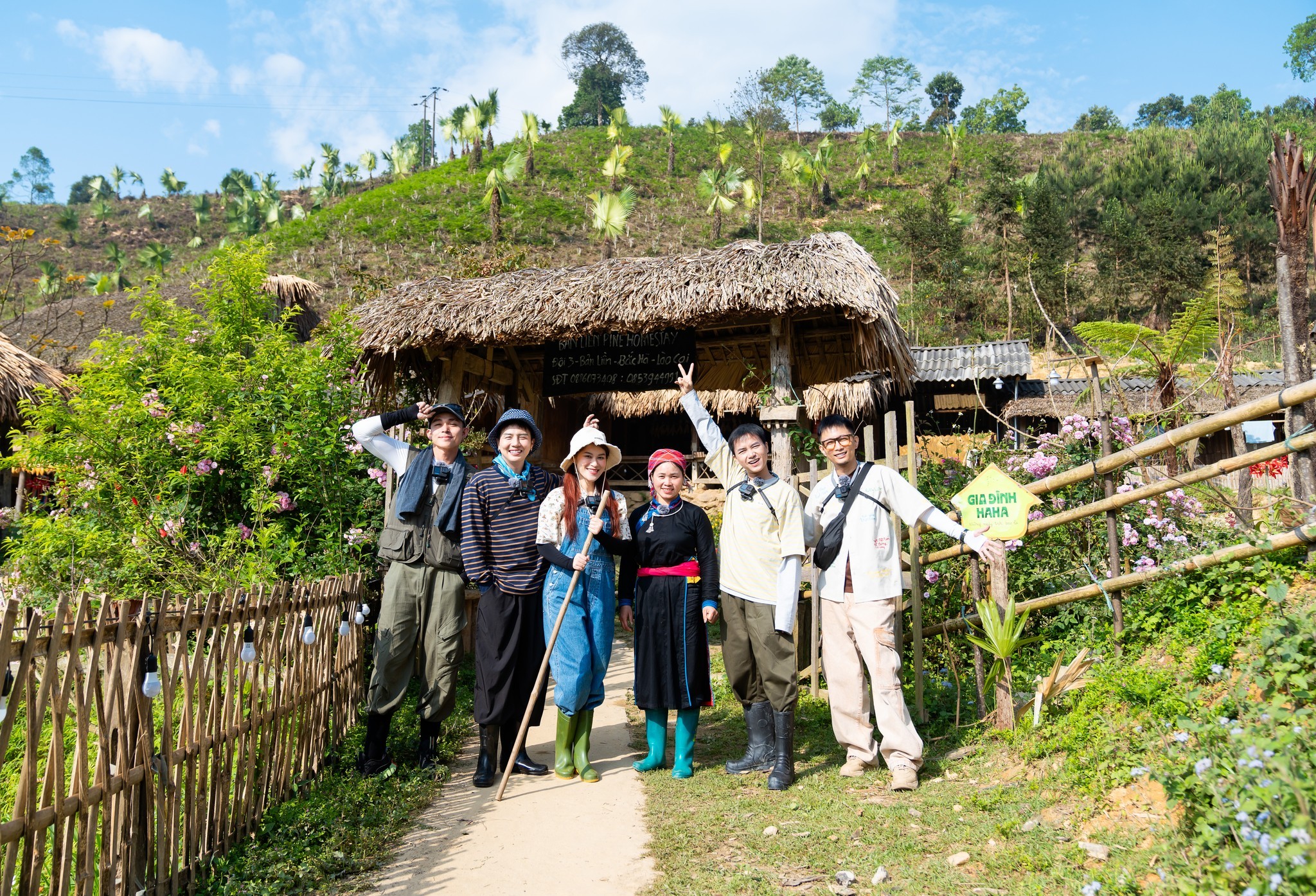
There is a fairy-tale "Bản Liền" in the highlands of Bac Ha
04 Sep, 2025
Ban Lien Commune – a picturesque land still little known Traveling to Ban Lien in Lao Cai is a journey to a tranquil land, about 30 km from the provincial center. Still relatively new on the Northwestern tourism map, Ban Lien captivates visitors with its pristine landscapes, showcasing the true Vietnam natural beauty. The commune also offers an authentic glimpse into Vietnam local life, with daily routines deeply rooted in the traditions of the Tay and Hmong people. Lying on the border with Tuyen Quang, its rolling mountains and lush forests create a captivating natural painting. With a cool and pleasant climate all year round, Ban Lien is ideal for excursions, trekking, and experiencing local life. More and more travelers are choosing Ban Lien to immerse themselves in the simple lifestyle, taste authentic local cuisine, and learn about the unique culture of the ethnic communities here. With sustainable community-based tourism development, Ban Lien is gradually becoming a perfect stopover for those seeking genuine and rustic values, distinct from familiar travel routes. If you have the chance to visit Ban Lien, don’t miss this small and charming commune to feel the simple yet alluring beauty of the highlands. Ban Lien appears serene with moss-covered stilt houses nestled among endless green terraced fields stretching into the distance. Ban Lien has long been home to Tay and Hmong communities. Tay stilt houses here are built from sturdy wood, often featuring a spacious main hall surrounded by one or two side sections, creating a solid yet simple structure. Around each house are lush green gardens, bringing a peaceful atmosphere characteristic of upland villages. Visitors are easily charmed by the slow pace of life in Ban Lien. Each morning, simply sitting on the front porch offers sweeping views of cascading terraced fields—lush green in one season, golden in another, or shimmering like mirrors under sunlight after rain. You can travel to Ban Lien at any time of year, but autumn is considered the most beautiful season. The weather turns crisp, rice fields begin to ripen into golden waves, and the fragrance of new rice drifts gently through the peaceful village. This is a distinctive charm that few places can match. Especially during harvest season, Ban Lien becomes a paradise for photography lovers. The scenes here rival those of Hoang Su Phi, Mu Cang Chai, or the famous villages of Sapa. Simply strolling along the village paths allows you to capture an entire album of unforgettable photos. Interesting Activities in Ban Lien Discover the cultural life of the Tay people The majority of Ban Lien’s residents are Tay people, who maintain a rich cultural identity. Locals are warm, honest, and hospitable, always ready to help and share stories about their homeland. Without modern or commercialized elements, tourism in Ban Lien brings you back to the most genuine and original values. Visitors can enjoy living like a true local and experiencing the Tay way of life. Activities such as farming, bamboo shoot picking, or crafting chopsticks blend naturally with sightseeing, offering authentic experiences. Admire the vibrant natural landscapes Nature in Ban Lien showcases the typical beauty of the Bac Ha highlands, with impressive hillsides and golden rice terraces. Adding to the charm are herds of buffaloes and horses roaming across the fields, creating a unique highland atmosphere. Clear, refreshing streams flow through Ban Lien, blending harmoniously into the majestic mountain scenery. Discover the colorful cuisine of Ban Lien The land is also known for its delicious local produce such as bamboo shoots, cassava, mustard greens, and stream fish. Specialty dishes you shouldn’t miss include bamboo-grilled stream fish and cassava patties. Join locals in tea-picking Ban Lien is also famous for its high-quality organic tea hills. Beyond their scenic beauty, these tea plantations produce one of the commune’s most valued specialties. The renowned Shan Tuyet tea from Ban Lien has even reached international markets, exported to major European countries. Ban Lien tea is known for its beautiful brew color—pale green tinged with light honey-yellow. Its flavor lingers sweetly on the palate long after sipping. Visitors can buy a variety of Shan Tuyet teas here, including green tea, black tea, white tea, and yellow tea. Visit the Bac Ha Weekly Market Don’t miss Bac Ha Market in Ban Lien, held every Thursday. This is a chance to immerse yourself in the cultural space of the Tay, Hmong, and Dao people, while also picking up Ban Lien’s famous Shan Tuyet tea and other local specialties rich in highland flavors. A trip to Ban Lien is not only a journey of exploring nature and culture, but also an opportunity to rediscover the simple and authentic values of the Northwest highlands. Amid the hustle and bustle of modern life, Ban Lien offers a tranquil pause, a place to keep cherished memories and nurture a love for the mountains.

Journey into the daily life of the H’Mong in Cat Cat Village
04 Sep, 2025
Sapa's Most Scenic Ethnic Gem Nestled within the serene embrace of the Hoang Lien Son mountains, just about 2km from the bustling heart of Sapa town, the captivating Cat Cat Village. Located specifically at Cat Cat Village, San Ho Commune, Sapa Town, Lao Cai Province, this isn't merely a destination, but a vibrant community where the Black Hmong ethnic minority has thrived since the mid-19th century. Here, you'll witness a traditional way of life, with homes nestled closely on the hillsides and farming meticulously carried out on terraced fields using age-old manual methods. The villagers expertly cultivate crops, raise livestock, and notably preserve traditional crafts like cotton and linen cultivation, alongside intricate textile weaving. This blend of authentic rural living and stunning natural landscapes makes Cat Cat Village a remarkable destination for both cultural and ecological tourism. Its charm lies in authentic Vietnam local life, with cobblestone paths winding past traditional wooden stilt houses set against a backdrop of panoramic terraces. These cascading terraces stretching across the valleys create a truly unique open-air cultural landscape, a feast for the eyes. Things to do in Cat Cat Village Immerse yourself in the unique charm of Cat Cat Village by partaking in these must-try experiences: Discover H’mong Culture Cat Cat Village is famous for its rich H’mong traditions and unique wooden stilt houses. These homes have three sections, wooden walls, and roofs made from pomu wood. Inside, you’ll find an altar, storage loft, and traditional rice mills powered by water instead of human labor. The H’mong people practice traditional crafts such as weaving, silver carving, and blacksmithing. Visitors can explore workshops, traditional games, admire handcrafted textiles, and witness the village’s preserved customs, including the fascinating "wife-pulling" marriage tradition. Enjoy A Walking Tour through Traditional Hmong Houses Visitors can stroll through the village’s peaceful pathways and admire the traditional Hmong stilt houses that line the way. These homes stand out for their thoughtful layouts, the use of locally sourced materials, and the intricate craftsmanship passed down through generations. Many households also operate small workshops, where artisans create and display handmade crafts. Travelers who want to gain a deeper understanding of Hmong culture and daily life can join a guided walking tour, while those who prefer to explore on their own may enjoy uncovering hidden corners of the village at their own pace. Watch Traditional Handicraft And Textile Weaving Visitors will witness the fascinating art of Hmong textile weaving, a skill passed down through generations. They can observe the intricate techniques Hmong artisans use to create vibrant and detailed patterns, creating colorful brocade fabrics adorned with motifs like plants, leaves, flowers, animals, and geometric shapes, using natural materials such as hemp and indigo dye. This is a fantastic opportunity for visitors to purchase unique, handmade souvenirs directly from the artisans, thereby supporting their livelihoods and taking home a piece of Hmong culture. Visitors might even have the chance to speak briefly with the artisans to learn more about their craft. Visit Tien Sa Waterfall (Cat Cat Waterfall) Visitors will embark on a truly scenic and somewhat adventurous walk down to Tien Sa Waterfall, famously known as Cat Cat Waterfall, a mesmerizing gem fed by the pristine waters of the Hoang Lien Son mountain range. The path leading to the falls, though a bit winding and sometimes slippery, especially after rain, rewards visitors with stunning, untouched views of the surrounding landscape. Visitors will find it best to visit early in the morning or late afternoon to experience its raw beauty without the crowds. The waterfall itself is a sight to behold - not merely picturesque, but genuinely wild and magnificent. Visitors can imagine a powerful cascade of white water tumbling over rugged rocks, creating a misty spray that dances in the sunlight. This untamed beauty offers unparalleled photography opportunities, allowing visitors to capture its raw power and the serene natural setting. The journey to the waterfall feels a little adventurous, echoing the kind of off-the-beaten-path thrill you might have felt standing amid the silent remnants of Khe Sanh base, where history and nature intersect. While here, visitors should wear sturdy, non-slip shoes and be cautious on the wet stones. Finding a quiet spot for a peaceful break or a small picnic amidst this natural wonder is an unmissable experience for visitors. Watch Cultural Performances: The Cat Cat Show To best experience the captivating cultural performances of the Black Hmong people, visitors should plan their visit around the weekend schedule. These engaging shows are typically held on Saturdays and Sundays. Visitors can immerse themselves in the vibrant cultural tapestry of the Black Hmong people by witnessing these engaging traditional dance and music performances held within Cat Cat Village. Performed by the village's own talented artistic troupe, these shows offer a wonderful glimpse into their heritage through graceful umbrella dances, lively folk dances, and the soul-stirring melodies of the Hmong flute. Additionally, visitors can often participate in traditional folk games like bamboo pole dancing, guidance is provided for those new to the activity. As visitors enjoy these authentic displays of Hmong artistry, they should remember to appreciate the cultural significance and treat the performers with respect, contributing to a meaningful exchange between visitors and the local community. Wander Through Rice Terraces Cat Cat Village is surrounded by lush rice terraces, offering breathtaking views. The layered fields change colors with the seasons—lush green in summer and golden in harvest time. Walking through these fields, you’ll witness local farmers tending their crops using traditional techniques. The best time to visit is from September to October, when the landscape is at its most stunning. Photographers and nature lovers will find endless opportunities to capture the beauty of the terraced fields. Try Local Food And Traditional Clothes Enhance your Cat Cat Village experience by embracing the local culture through its cuisine and traditional clothing. Along the path leading into the village, you'll find numerous shops offering traditional Hmong outfits for rent. As you explore, be sure to indulge in the local culinary scene. Small snack stalls and restaurants dotted throughout and near the village offer a taste of authentic Hmong flavors. Don't miss the simple yet delicious grilled corn and the fragrant bamboo sticky rice, and take a long cool sip of refreshing traditional herbal tea for the ultimate experience Beyond these snacks, Cat Cat Village and the surrounding Sapa area boast a variety of unique dishes worth sampling, such as flavorful buffalo meat, traditionally brewed corn wine, fresh local fruits like plum, peach, and pear and the comforting local hotpot. These culinary delights offer another enriching dimension to your visit. A visit to Cat Cat Village is not only about admiring the grandeur of the mountains and forests but also about immersing yourself in the simple daily life, creative spirit, and cultural identity of the Hmong people. From golden terraced fields and the rhythmic sound of weaving looms to traditional dances and folk songs, every element creates a vivid and unforgettable experience. Blending nature with culture, Cat Cat Village truly stands as Sapa’s “hidden gem” – a destination that anyone with a passion for exploration and authentic encounters should visit at least once.

Transform into a farmer at Tra Que vegetable village
29 Aug, 2025
Experience the Daily Life of Farmers At Tra Que Vegetable Village, visitors can truly step into the shoes of a local farmer. The adventure begins with donning a traditional conical hat, rolling up your sleeves, and heading into the lush green fields. Under the guidance of friendly villagers, you’ll learn how to prepare the soil, sow seeds, and nurture crops with care. One of the most unique experiences here is using the traditional bamboo buckets balanced on a shoulder pole to water the vegetables—a centuries-old technique that locals still practice today. From pulling weeds to harvesting fresh herbs, every task allows you to feel the connection between people and nature. The rhythm of farm work may seem simple, but it requires patience and dedication. This hands-on activity not only brings joy and laughter but also offers travelers a deeper appreciation of the effort behind each bunch of vegetables that makes its way to the dining table. Learn About Traditional Organic Farming Unlike modern farming methods that rely heavily on chemicals, Tra Que Vegetable Village has proudly preserved its organic agricultural practices for generations. Farmers here use natural fertilizers made from river algae, creating a nutrient-rich soil that produces safe, healthy vegetables with unique flavors. Visitors will be fascinated to learn about the delicate balance that farmers maintain between soil, water, and crops to keep the ecosystem sustainable. Step by step, locals explain their planting and harvesting techniques, revealing knowledge that has been passed down for centuries. This not only enriches your understanding of eco-friendly farming but also highlights the harmony between human life and the natural environment. Enjoy Local Dishes from Fresh Ingredients After working in the fields, it’s time to enjoy the delicious fruits of your labor. Visitors are invited into local homes or small village kitchens where meals are prepared using vegetables freshly picked from the garden. The dishes are simple yet bursting with freshness and flavor. Signature specialties include Tam Huu—a delicate combination of shrimp, pork, and fragrant herbs tied together with a scallion string, a dish often described as the “soul of Tra Que.” Other local favorites such as crispy pancakes, stir-fried morning glory, and fragrant soups showcase the region’s culinary creativity while staying true to its rustic charm. Sharing a meal with the villagers is more than just dining—it is an intimate cultural exchange filled with warmth and hospitality. A Green and Peaceful Escape Beyond the farming experience, Tra Que Vegetable Village itself is a serene retreat. The air is fresh and filled with the scent of herbs like basil, mint, and coriander. Walking or cycling through the narrow village paths lined with vegetable plots, visitors can admire the picturesque scenery of endless green fields dotted with hardworking farmers in their conical hats. The village is also a perfect spot for relaxation. Whether you sit by the garden, sip a cup of tea, or simply listen to the sounds of nature, the atmosphere brings a sense of calm and balance. For those looking to escape the hustle and bustle of Hoi An’s Old Town, Tra Que offers a refreshing contrast—peaceful, green, and authentic. Visiting Tra Que Vegetable Village is much more than a sightseeing trip—it is about living the culture. Here, travelers are not passive observers but active participants, learning, working, and sharing life with the locals. This immersive experience promotes eco-friendly travel, encouraging visitors to respect the land, support sustainable practices, and engage responsibly with the community. Every moment spent in Tra Que—from farming in the fields and enjoying home-cooked meals to wandering through peaceful gardens—becomes a memory to cherish. It is an authentic and heartfelt journey that no visitor to Hoi An should miss.
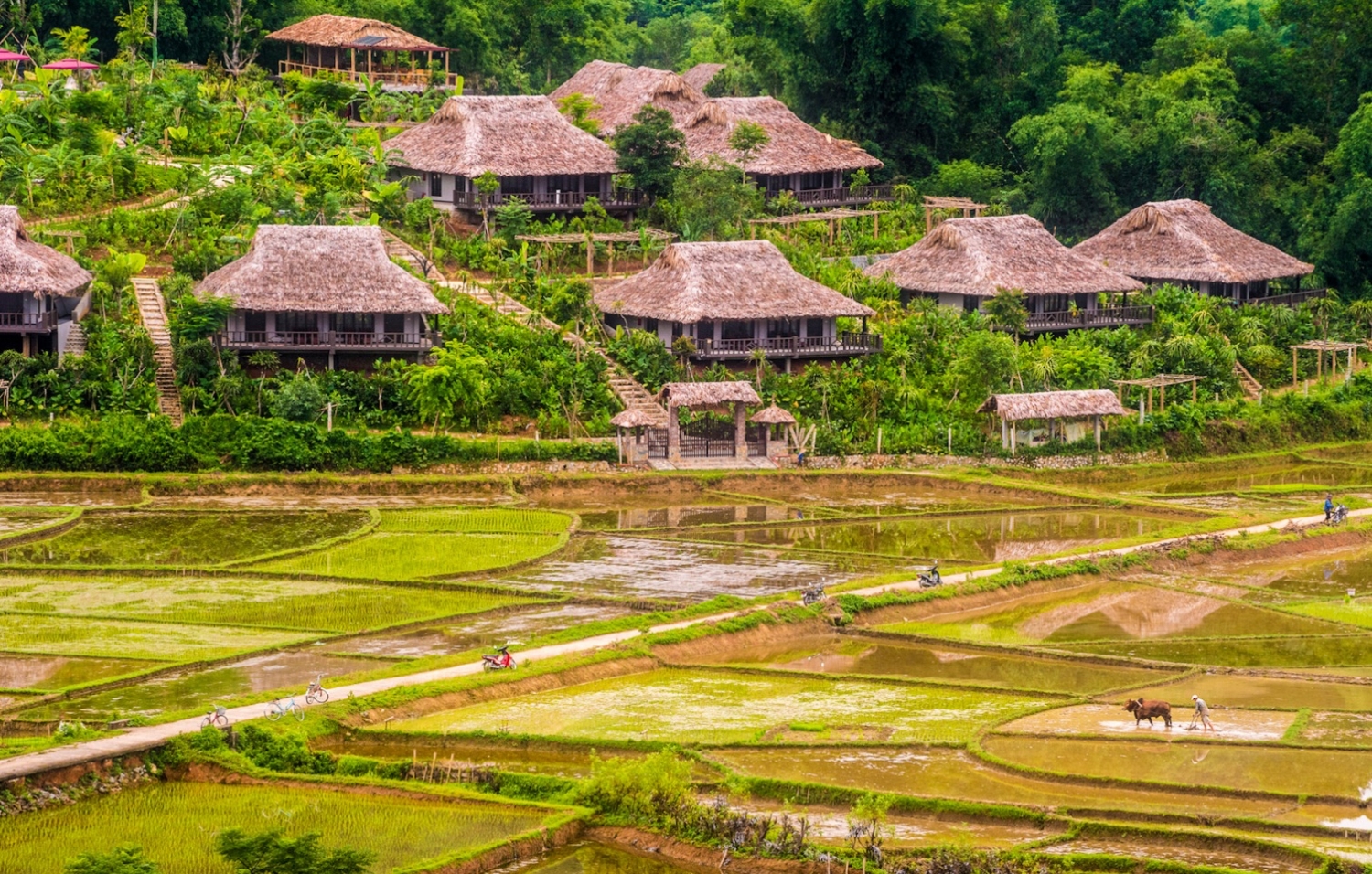
Experience life in Ban Lac on a journey to old Mai Chau
29 Aug, 2025
Ban Lac Community Tourism (Mai Chau) Ban Lac is a well-known community-based tourism site popular with both domestic and international visitors. Nestled in the Mai Chau valley of Hoa Binh Province, it is home to the Thai ethnic group and was historically called Muong Mun. The Thai people here live in concentrated, prosperous communities and have preserved their traditional culture, including stilt houses, culinary practices, and cultural expressions, which have shaped and developed tourism in the area. Visitors can enjoy the authentic charm of the Vietnam natural landscapes surrounding Ban Lac while engaging in Sustainable travel, supporting local communities and preserving the environment. From Hanoi, travelers follow National Highway 6 toward Son La for about 130 km, then turn left at the Tong Dau intersection onto National Highway 15. After passing Mai Chau town for approximately 2.5 km, they will reach Ban Lac, named one of the 10 most interesting destinations in the world by Business Insider. Over 700 years old, Ban Lac consists of 129 households with 539 residents of various ethnic groups. Historically, locals relied on rice cultivation, upland farming, and brocade weaving. Over time, the hidden charm of Ban Lac was gradually discovered by tourists, offering a perfect blend of cultural richness and natural beauty for those seeking meaningful travel experiences. Today, 74 households provide tourism services, offering meals and accommodations at family-run homestays. Each stilt house is numbered, elevated, clean, and preserves traditional architecture, with neatly arranged bedding inside. Locals continue traditional crafts, producing brocade textiles, handmade clothing, Thai skirts, wristbands, handbags, bows, crossbows, buffalo bells, and buffalo horns as souvenirs for visitors. At Ban Lac, beyond staying and dining in stilt houses, visitors can enjoy cultural experiences such as Xoe dancing, bamboo pole dancing, and drinking rice wine with local performance groups either at homes or at community bonfire areas. Tourists can also buy brocade textiles, handicrafts, taste traditional sticky rice cooked in bamboo, grilled dishes at households, and explore villages, caves, and local markets by electric cart, motorbike, or bicycle to discover the poetic and fascinating Ban Lac. Experiencing Ban Lac Ban Lac today is a well-established community tourism destination, familiar to travelers from near and far. It is not a bustling or grand place but offers a simple, natural, and welcoming environment. Visitors often remark that Ban Lac harmoniously blends tradition and modern culture, with locals providing tourism services without aggressively soliciting customers. Safety and order are ensured, and residents exhibit strong community spirit and unity. Mai Chau is home to seven ethnic groups, with the Thai people making up nearly 60%, followed by the Muong and Kinh over 11%, the Hmong at 9.6%, the Dao at 2.2%, and other ethnic minorities. Each group contributes unique cultural traits, providing favorable conditions for community-based tourism development. Other Community Tourism Spots Ban Pom Coong is another attractive destination, retaining the simple and peaceful charm of a highland rural area. Its name is unique: “Pom” in Thai means hill, and “Coong” means drum, so together it describes a village with hills resembling a drum. The landscape combines hills and fields, creating a stunning natural panorama. Ban Van is also appealing, quieter than Ban Lac, with neatly arranged stilt houses, spacious areas, and beautiful natural scenery. Visitors can enjoy the views, taste local cuisine, and learn about the traditional culture of the local people. For those wanting to explore further, Ban Hich in Mai Hich Commune, about 12 km from Mai Chau town center, offers peaceful village life, picturesque natural scenery that changes with the seasons, friendly locals, and cultural experiences such as traditional weaving, brocade, and basketry. Visitors can also taste local specialties like green-headed duck, wild vegetables, and fish, and explore the charming Xia stream by boat. Ban Buoc in Xam Khoe Commune, 25 km southwest of Mai Chau town, amazes visitors with its green landscapes. Travelers can relax while enjoying views of palm hills, winding terraced fields, and gentle smoke rising from stilt houses’ kitchens. Hmong Community Tourism Moving from Thai community tourism, visitors can explore Hmong community tourism. About 30 km from Mai Chau town along National Highway 6 toward Son La, Ban Cha Day in Pa Co Commune is situated at 1,140 meters above sea level. Residents primarily farm, raise livestock and poultry, and some run homestays. Visitors can experience a Saturday night market and the Pa Co Sunday market. A further 6 km leads to Ban Hang community tourism village, at nearly 1,000 meters above sea level, offering cool weather year-round. The Hmong people reside here, and in spring, visitors can see plum and peach blossoms covering the forests. Tourists can also admire sea-of-cloud views in the valley, learn about Hmong customs and traditions, try weaving and dyeing fabrics, make traditional clothing, and taste local specialties from the Northwest mountains such as sticky rice, village pork, grilled chicken, and sticky rice cakes.
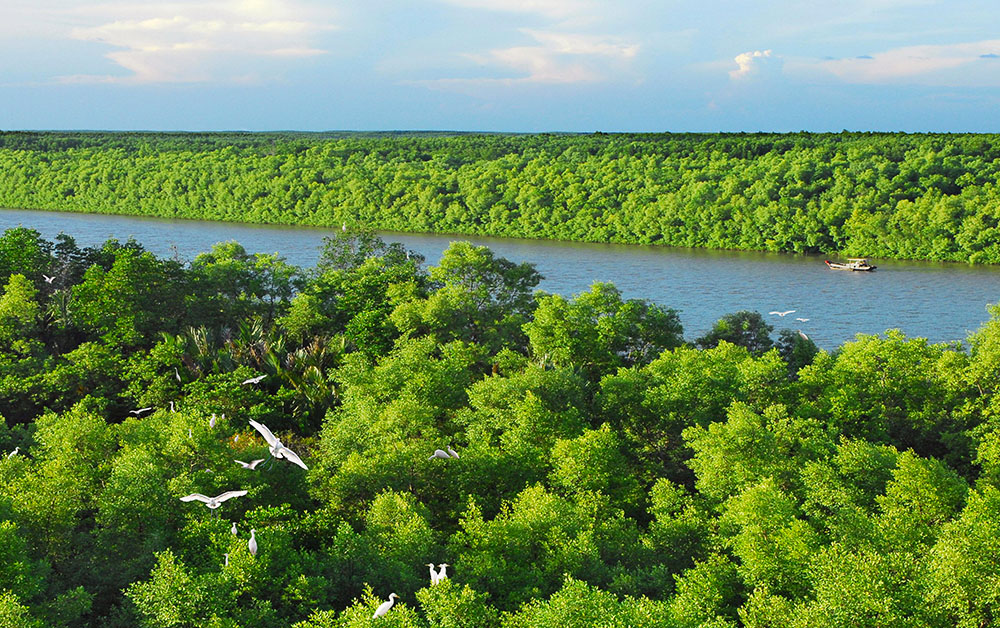
Visit Can Gio to experience Vietnam’s unique mangrove forest
29 Aug, 2025
The biodiversity values of Can Gio Mangrove Forest Can Gio Mangrove Forest is a sprawling, lush sanctuary located in its namesake district, in the Southeastern region of Ho Chi Minh City. This over 70,000-hectare-wide ecological gem not only protects the region from coastal erosion but also plays a critical role in preserving local biodiversity. Acting as a natural buffer against storms, the forest is a treasured biosphere reserve that invites both nature lovers and adventure seekers alike, all while playing the role of protector for the southern region from hurricanes, especially Ho Chi Minh City. Since it is recognized by UNESCO as Vietnam’s first biosphere reserve, Can Gio Mangrove Forest is a true haven for biodiversity. The forest’s lush vegetation includes 93 mangrove species as well as 225 introduced plants, making up 315 higher plant species. On the fauna side, this ecological gem supports an impressive range of creatures. From migratory birds that fly gracefully across the sky to the diversity of reptiles, crustaceans, and small mammals, the Can Gio Mangroves truly encapsulate nature’s diversity. The population here includes an impressive number of species: 89 insects, 282 fish, 36 amphibians, 36 reptiles, 164 birds, and 35 mammals. Must-see attractions in Can Gio Mangrove Forest Your time at Can Gio Mangrove Forest can be a trip back in time or a fun exploration of the flora and fauna here. It depends on which of these activities you decide to try out. Sac Forest War Base Exploring the Sac Forest War Base is like stepping into a hidden chapter of history right inside the Can Gio Mangrove Forest area. This intriguing site offers a fascinating glimpse into Vietnam’s war legacy interwoven with nature’s resilience. Visitors can wander through remnants of old bunkers and military relics, gaining insights from well-curated displays that recall the past. Vam Sat Tourist Area The enchanting realm of the Vam Sat Tourist Area is right in the heart of the Can Gio Mangrove Forest zone. Here, you will hop on a speed canoe and ride along serene waterways to uncover the secrets of local mangrove ecosystems like the Giant Bat Lagoon or the Tram Chim Reservation. Other than that, you can attempt to fish for crabs in an exciting competition or take in the scenery from the spectacular vantage point atop Tang Bong Tower. Monkey Island Monkey Island is one of the most unique and whimsical attractions in the Can Gio Mangrove Forest area. Once home to only a few monkey residents, the island is now bustling with over 2,000 playful and mischievous monkeys thanks to meticulous care in their habitat. Visitors can explore the island to learn about the fascinating behaviors and daily lives of these clever creatures or enjoy live shows on weekends and holidays starring the same cheeky residents of the island. Just be sure to secure your belongings, like your camera or phone, as they might just catch the attention of a handsy monkey. Dan Xay Mangrove Park Dan Xay Mangrove Park is an immersive eco-adventure destination where learning and fun seamlessly intertwine. Visitors can get their hands dirty with activities right in the mangrove ecosystem, whether it is tree-planting activities, discovering innovative aquaculture techniques, or delving into the daily life of local forest guardians. If you want to get moving, there are memorable journeys by canoe, kayak, or even electric car tours through the lush forest trails. The park also offers unique opportunities like camping under the stars and trying your hand at catching local seafood, so there will never be a dull moment. Craft villages As you really venture into the mangrove forest of Can Gio, you will come across various craft villages. In Tam Thon Hiep, the once-bustling mat-weaving village still quietly continues their tradition, with less than 10 households keeping the meticulous craft alive. Meanwhile, down by the water at Can Thanh, Long Hoa, and Thanh An, fishing hamlets are a key part of the vivid coastal life. Watching fishermen haul in their fresh catch at dawn or dusk feels like a scene from a postcard; only now, you can capture the photos yourself. Speaking of spectacular sights, the salt village Tan Dien Hamlet, Ly Nhon, is especially magical in the dry season. As you feast your eyes on the scenery, you can learn a thing or two about a time-honored trade whose products now reach as far as the EU. Lastly, you will catch sight of a vital community of forest keepers in Tam Thon Hiep, An Thoi Dong, and Ly Nhon, where generations have lived by planting, protecting, and preserving the precious mangrove environment. Sacred sites Each area in Ho Chi Minh City has something that lets visitors get a glimpse into the colorful history of the city, and Can Gio Mangrove Forest is no exception. Make your way to these spots in the area to uncover some amazing stories: Can Thanh Temple is a cultural beacon in Can Gio with its distinctive wooden architecture and a serene space for community gatherings, playing an indispensable role in preserving local traditions in Ho Chi Minh City. Duong Van Hanh Temple is a revered sacred site characterized by traditional Vietnamese architecture. Its rich history and spiritual legacy of “The Headless Deity” are worshiped in a peaceful setting. Thuy Tuong Can Thanh Mausoleum, established as a tribute to the revered water marshal, features an awe-inspiring 12-meter-long whale skeleton that magnificently embodies the cultural pride and historical heritage of Can Gio. Best time to visit Mangrove Forest in Can Gio When it comes to planning your Can Gio Mangrove Forest, Vietnam, adventure, timing is everything. The dry season, typically from December to April, is best for a trip here, so you can enjoy the outdoor activities to the fullest. In addition to favorable weather, Can Gio comes alive with vibrant festivals throughout the year, so you might want to plan around those occasions. For example, the Nghinh Ong Festival in the 8th lunar month is an event featuring traditional rituals and more. The Can Gio Mangrove Forest is more than just a green lung of Ho Chi Minh City—it is a living treasure that harmoniously blends biodiversity, history, and culture. From lush mangrove ecosystems and playful monkeys to sacred temples and traditional craft villages, every corner of this biosphere reserve offers something unique. A visit here is not only an eco-adventure but also a journey into Vietnam’s natural and cultural heritage. Whether you are a nature enthusiast, a history lover, or simply someone seeking a peaceful escape from the bustling city, Can Gio Mangrove Forest promises an unforgettable experience.
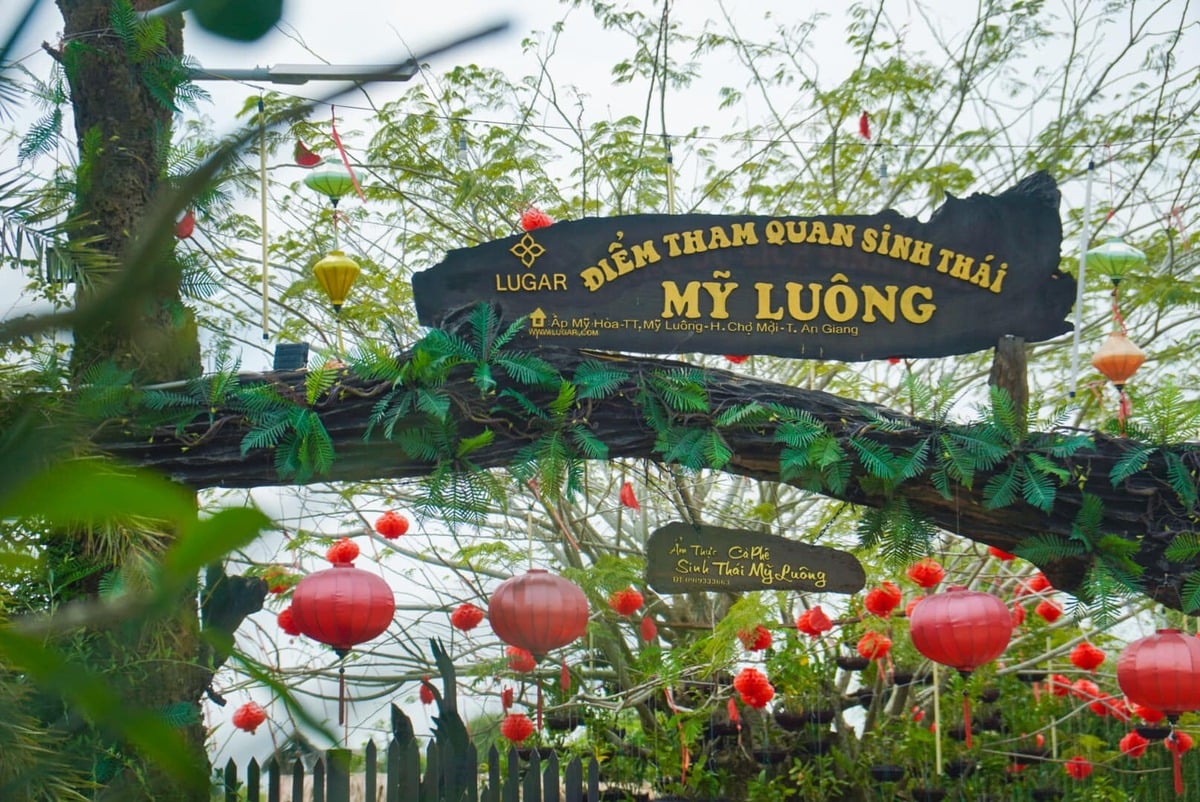
Immerse yourself in the natural wonders of My Luong
29 Aug, 2025
Explore Scenic Landscapes One of the first things that immediately captivates visitors to My Luong is its breathtaking and ever-changing natural scenery. The region is crisscrossed by winding rivers that glisten under the sunlight, their banks lined with dense bamboo groves swaying gently in the breeze. Serene lakes, like mirrors, reflect the sky and surrounding greenery, creating a sense of perfect harmony between water and land. The rolling rice fields stretch as far as the eye can see, their colors shifting with the seasons—from vivid emerald green in the early growing season to rich golden hues just before harvest. Towering limestone hills punctuate the horizon, their rugged silhouettes adding drama to the otherwise gentle landscape. As the sun rises and sets, the play of light and shadow across the hills, rivers, and paddies transforms the scenery into a living painting, captivating photographers, artists, and travelers alike. Walking or cycling through the area, you can feel the subtle rhythm of rural life intertwined with nature. Early mornings bring a mystical atmosphere, with mist hovering over the rice paddies and the soft murmur of streams weaving through the fields. Birds sing in the bamboo groves, their calls echoing across the valleys, while dragonflies skim the water’s surface, adding delicate motion to the serene scene. Along narrow earthen paths, locals can be seen tending to their crops, gently guiding water through irrigation channels or carrying bundles of freshly cut rice—a glimpse into centuries-old agricultural traditions. This immersive experience allows visitors to slow down, breathe deeply, and truly absorb the tranquility and harmony of My Luong’s natural landscapes. Whether you choose to wander along riversides, pause beside reflective lakes, or climb gentle hills to admire panoramic vistas, every step offers new perspectives and unforgettable views. The combination of water, rice fields, forests, and limestone formations creates a visual symphony that embodies the essence of rural Vietnam, leaving visitors with a profound sense of peace and wonder. Discover Local Villages and Traditions Beyond the landscapes, My Luong is a living museum of Vietnamese culture. The small villages that dot the region invite travelers to experience traditional crafts and local ways of life. You can: Visit rice paddies and watch farmers work with traditional methods that have been passed down for generations. Participate in craft workshops, such as pottery, weaving, or bamboo crafting, learning the hands-on skills that sustain local communities. Sample fresh, home-cooked meals made from ingredients grown in the surrounding fields and gardens. Interacting with villagers provides not only a cultural experience but also insight into the delicate balance between human life and the natural environment, which has shaped My Luong for centuries. Adventure on Water and Land For those seeking adventure and exploration, My Luong offers a variety of activities to suit every type of traveler: Kayaking and Boat Tours Glide along peaceful rivers and hidden waterways in a kayak or small boat, allowing you to explore the secret corners of My Luong that are often unreachable by foot. Drift under overhanging bamboo groves and past lotus-filled lakes while observing herons, kingfishers, and other waterbirds in their natural habitat. The gentle movement of the boat invites moments of calm reflection as you listen to the soft ripple of water and the whisper of the wind through trees. Some tours even venture into freshwater streams that feed into the lakes, revealing small waterfalls, rock formations, and quiet coves perfect for photography or a short picnic. Hiking and Trekking For those who love land-based adventures, hiking and trekking through My Luong’s forested trails and limestone hills offer a blend of physical challenge and natural beauty. Each path leads to a unique vantage point—whether it’s a waterfall cascading over moss-covered rocks, a panoramic overlook of terraced rice fields, or limestone cliffs that frame the horizon. Along the way, travelers encounter dense vegetation, wildflowers, and the occasional sighting of wildlife such as small birds, butterflies, or monkeys. The trails vary from gentle slopes suitable for casual walkers to more rugged climbs for those seeking a sense of achievement and exhilaration. Cycling Adventures Cycling through My Luong is another popular way to immerse yourself in the countryside. Quiet roads and narrow dirt paths connect villages, rivers, and natural landmarks, providing an eco-friendly way to explore at your own pace. Pedal past fields of rippling rice, cross small wooden bridges, and wave to local farmers tending their crops. Cycling allows visitors to cover more ground than hiking while still feeling intimately connected to the environment. Along the way, you can stop to observe traditional farming practices, enjoy local snacks, or photograph scenic vistas that stretch as far as the eye can see. Wildlife and Biodiversity My Luong is home to a rich variety of flora and fauna. The area’s wetlands, forests, and cultivated lands create habitats for countless species: Birdwatchers can spot kingfishers, herons, and other native birds. Botanists and plant enthusiasts will enjoy discovering rare herbs, aquatic plants, and forest trees that thrive in the region. Small mammals, reptiles, and amphibians inhabit the forests and wetlands, while freshwater fish populate the rivers and streams. This biodiversity makes My Luong an ideal destination for eco-tourists, nature photographers, and anyone interested in learning about Vietnam’s natural heritage. Sustainable Travel Tips To fully enjoy your visit while protecting My Luong’s delicate ecosystem, keep in mind a few practical tips: Wear comfortable shoes and clothing suitable for hiking, boating, and cycling. Bring sunscreen, hats, and insect repellent for sun and insect protection. Respect local customs and the natural environment—avoid littering, picking plants, or disturbing wildlife. Support local communities by purchasing handmade crafts or tasting locally grown foods. Visiting My Luong Eco Tourism Area is more than just a sightseeing trip—it is an immersive journey into the heart of Vietnam’s natural and cultural landscapes. From paddling along tranquil rivers to trekking through vibrant forests, from observing rare wildlife to engaging with welcoming villagers, every moment offers unique experiences that create lasting memories. Whether you are seeking adventure, serenity, or cultural connection, My Luong promises a rare blend of discovery and relaxation. This hidden treasure invites you to slow down, explore deeply, and immerse yourself in the natural wonders that make Vietnam so extraordinary.
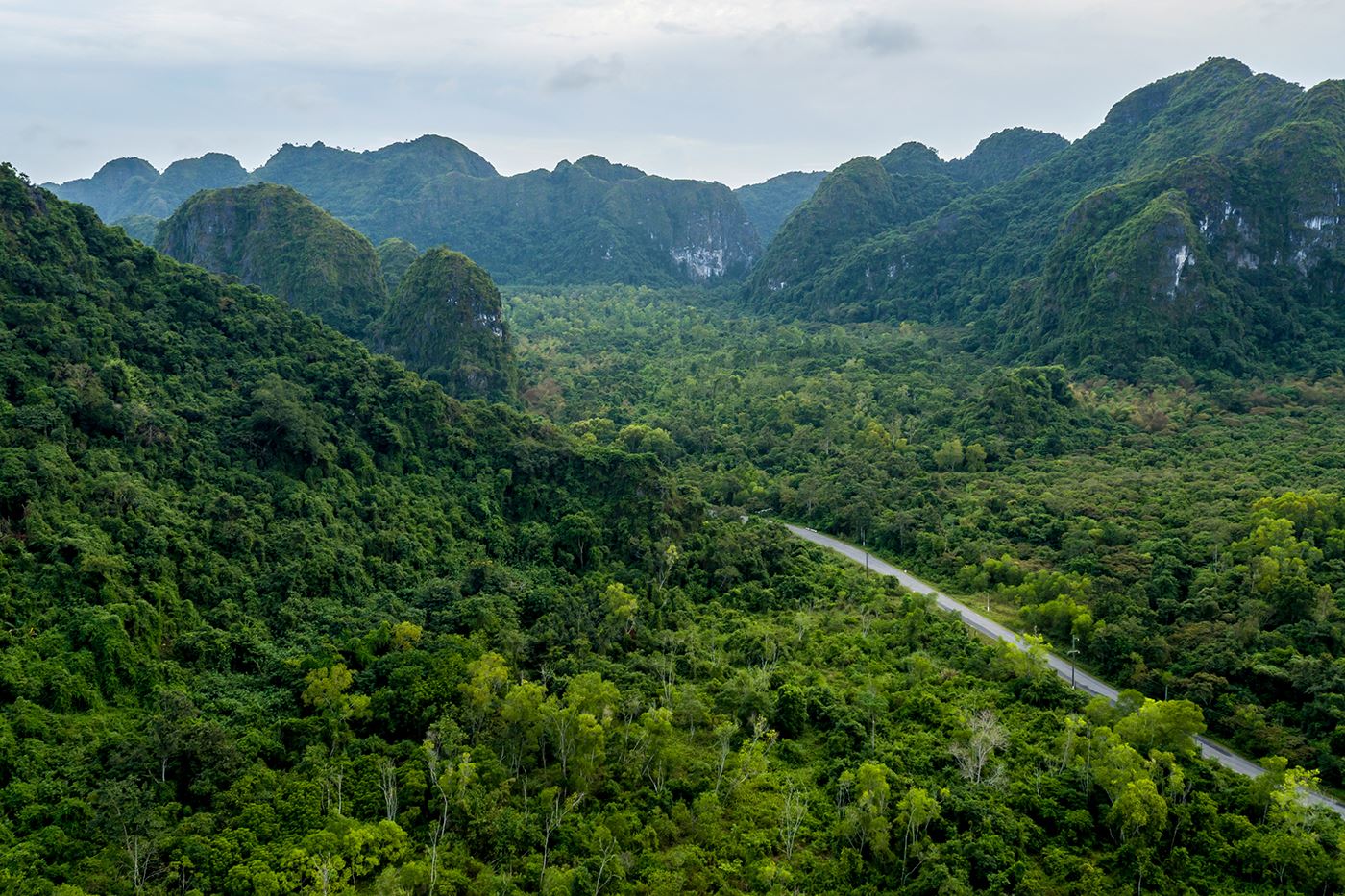
Discover Cat Ba National Park – the green lung thriving amidst the sea
29 Aug, 2025
Cat Ba National Park – The “Green Lung” of Hai Phong Cat Ba National Park is located along the Cat Ba Island Road, Tran Chau Town, Cat Hai District, Hai Phong City, about 30 km south of the city center. It is one of the largest special-use forests in Vietnam and a UNESCO-recognized biosphere reserve. The park preserves a wide range of ecosystems, including marine environments, terrestrial forests, mangroves, and numerous rare species of flora and fauna. The park covers a total natural area of 17,360 hectares, including 11,000 hectares of forest and 6,500 hectares of marine waters. Thanks to favorable climate and environmental conditions, Cat Ba National Park has become an ideal location for the development and preservation of diverse ecosystems. Currently, the park’s ecosystems include over 282 plant species and nearly 800 animal species living both on land and in the sea. In addition to its rich biodiversity, Cat Ba National Park also attracts numerous domestic and international tourists due to its historical value. Archaeological evidence shows that humans have inhabited this area for thousands of years. What Can You Explore in Cat Ba National Park? Forest Ecosystem The forest ecosystem in Cat Ba National Park is a true treasure trove of biodiversity, hosting thousands of plant and animal species. Walking through the park, visitors can marvel at towering ancient trees with massive trunks and expansive canopies that create shaded, cool pathways. The forests are divided into three main types: Primary Forest: This pristine forest area features old-growth trees, rare orchids, ferns, and a variety of shrubs. The untouched environment provides habitats for numerous birds, small mammals, and insects, making it perfect for nature lovers and photographers. Mangrove Forest: Found near the coastline and estuaries, mangrove forests are essential for maintaining the ecological balance. They act as nurseries for young fish and crustaceans and provide shelter for migratory birds. Walking along the wooden boardwalks through the mangroves allows visitors to experience the unique water-forest interface. Conifer Forest: A rare ecosystem unique to Cat Ba Island, this forest type includes the island’s endemic conifers. These trees stand tall with needle-like leaves and provide a distinct contrast to the surrounding tropical greenery, offering a serene and almost mystical environment for trekkers. Exploring the forest areas, visitors can hear the calls of wild birds, spot squirrels and other small mammals, and even glimpse the occasional langur swinging through the treetops. The forest is a perfect blend of serenity and adventure. Marine Ecosystem The park’s marine ecosystem stretches across bays, coastlines, and limestone foothills, boasting nearly 1,500 species of marine life. Snorkelers and divers are treated to vibrant coral reefs teeming with colorful fish, starfish, sea urchins, and a variety of algae. Seaweed and plankton thrive here, supporting a rich underwater food web. Visitors can actively engage with this ecosystem through several activities: Kayaking: Paddle along calm waters between limestone islands, discovering hidden caves, secluded beaches, and mangrove inlets. Snorkeling and Diving: Observe colorful corals and tropical fish up close in crystal-clear waters. Beach Activities: Relax on pristine beaches, swim in calm bays, or explore tidal pools filled with fascinating marine life. The combination of tranquil waters, limestone cliffs, and thriving marine habitats makes this area a paradise for nature enthusiasts and water sports lovers alike. Rare Wildlife Although less extensive than the forest and marine ecosystems, the park’s wildlife is no less remarkable. Cat Ba National Park is home to approximately 1,000 fish species, 60 mammals, nearly 200 bird species, 50 reptiles, and 20 amphibians. The island’s most famous resident is the Cat Ba langur (golden-headed langur), a critically endangered primate found only here. Visitors may catch glimpses of these rare langurs leaping between cliffs and ancient trees—a truly unforgettable sight. Other notable animals include monitor lizards, various snake species, otters, and a wide variety of birdlife, including kingfishers, herons, and egrets. The park also hosts amphibians such as frogs and toads, which play an essential role in maintaining ecological balance. With its rich biodiversity and diverse habitats, Cat Ba National Park offers an immersive experience for anyone passionate about exploring and studying natural flora and fauna. Each ecosystem—from lush forests to vibrant coral reefs—invites visitors to witness the island’s remarkable natural heritage firsthand, while practicing sustainable travel to help preserve these environments for future generations. Tips for Visiting Cat Ba National Park As a UNESCO biosphere reserve, visitors should follow these guidelines: Do not litter; maintain cleanliness. Do not cut trees, pick flowers, or damage plants. Be environmentally friendly and avoid disturbing wildlife. Bring sufficient snacks and drinks for a comfortable exploration. Prepare necessary medications such as cold medicine, headache relief, fever reducers, and mosquito repellent. Cat Ba National Park is more than just a natural reserve—it is a living laboratory of biodiversity and a haven for eco-adventures. From exploring dense forests and mangroves to discovering rare wildlife and diving into crystal-clear waters, every visit promises unique experiences. By respecting the park’s environment and following sustainable practices, travelers can help protect this irreplaceable treasure for generations to come.
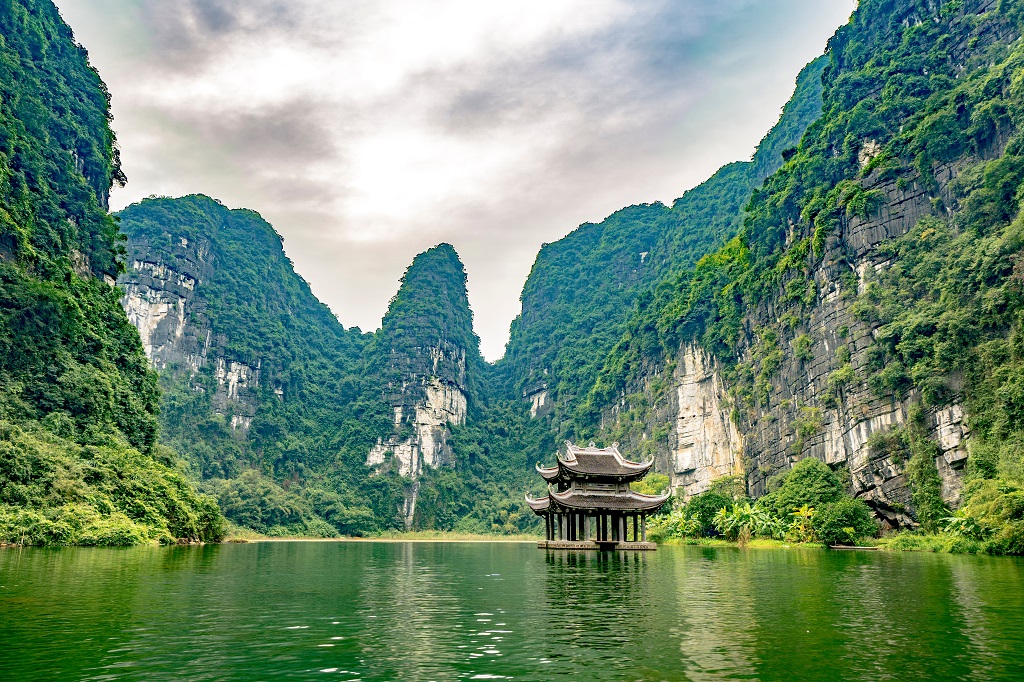
Journey through the World Cultural and Natural Heritage of Trang An
29 Aug, 2025
Unique mixed heritage The Trang An Scenic Complex covers an area of 12,252 hectares, including three conservation zones: the Hoa Lu Ancient Capital Historical and Cultural Site, the Trang An – Tam Coc – Bich Dong Scenic Area, and the Hoa Lu Special-Use Primary Forest, with a buffer zone of 6,026 hectares. In 2014, the Trang An Scenic Complex became the first and only mixed heritage site in Southeast Asia recognized by UNESCO as a World Cultural and Natural Heritage site. It met Criterion V for cultural significance and Criteria VII and VIII for natural beauty and geological formations. Within the Trang An Scenic Complex, Trang An Ecotourism Area is famous for its characteristic karst limestone landscape, along with a rich ecosystem of forests, caves, and wetlands. Formed over hundreds of millions of years through geological changes, climate shifts, and the rise and fall of sea levels, Trang An boasts 31 interconnected lakes and 48 caves. This cave system makes the ecotourism area unique, offering boat tours along routes where visitors do not need to backtrack, unlike in many other locations. Trang An also features diverse aquatic ecosystems, home to numerous rare species of flora and fauna, including thousands of types of algae and moss, which scientists describe as an “underwater primary forest.” The harmony between natural scenery and biodiversity creates a truly spectacular environment. Alongside its natural formation history, Trang An is also known as the “cradle” of prehistoric human evolution. Archaeological excavations suggest that prehistoric communities settled in the caves and rock shelters at the core of Trang An tens of thousands of years ago. These people were among the first in Vietnam to access and exploit the sea, creating limestone tool complexes, developing flaking techniques, crafting pottery, and practicing agriculture in the wetland valleys. These features contribute to the global cultural significance of the heritage site. Additionally, Trang An is associated with historic sites such as Hoa Lu Ancient Capital, Bai Dinh Pagoda, Tran Temple, Phu Khong, Vu Lam Palace, and Cao Son Temple, offering visitors a variety of fascinating tour options. Attractions in Trang An ecotourism area Trang An Ecotourism Area is not only renowned for its picturesque river and mountain landscapes but also for its unique cultural, historical, and natural values. By embracing sustainable travel, visitors can explore the area responsibly, preserving its pristine environment and supporting local communities. Here are the must-visit attractions in Trang An: Cultural and Spiritual Sites Trang An is a land rich in cultural heritage, preserving many historically significant spiritual sites: Trinh Temple: This temple honors four prominent mandarins of the Dinh Dynasty who helped King Dinh Tien Hoang consolidate power and lay the foundation for the Dai Co Viet state. Its ancient architecture set against the scenic mountains creates a solemn and tranquil atmosphere. Tran Temple (Ninh Binh): Established by King Dinh Tien Hoang to worship the deity Quy Minh, guardian of the southern gate of the Hoa Lu Four Protectors. The temple combines traditional Vietnamese architecture with its natural surroundings, creating a distinctive cultural highlight in Trang An. Tu Tru Temple: Dedicated to four high-ranking mandarins of the Dinh Dynasty who helped quell the 12 warlords and establish the Dai Co Viet state. This site is important for understanding the history and culture of the Dinh period. Phu Khong: A site venerating seven loyal officials of the Dinh Dynasty, reflecting the respect and reverence of the people for these historical figures. Vu Lam Palace: A structure preserving traces of the royal court, reflecting the political and cultural life of the Dinh and Le dynasties, harmoniously integrated with the surrounding natural scenery. Mysterious Caves Trang An is also famous for its impressive limestone cave system, each with its own story and significance: Dia Linh Cave: Nearly 1,500 meters long, featuring unique stalactites and fossilized stalagmites. The interior creates a mysterious atmosphere, ideal for those who love exploring majestic natural formations. Nau Ruou Cave: Notable for its underground spring over 10 meters deep, where hundreds of traditional wine jars have been distilled from this pure water source. This cave also represents the long-standing traditional crafts of local people. Boi Cave: Revealing traces of prehistoric humans from around 10,000 years ago, this cave holds significant archaeological value and attracts researchers and visitors interested in ancient history. Sang – Toi Cave and Ba Giot Cave: These caves are also worth exploring, featuring unique stalactites, stalagmites, and striking natural scenery. Each cave offers a different experience, from the cool interior to the scenic views outside. The Trang An Scenic Complex is not only a breathtaking natural wonder but also a living museum of Vietnam’s history and culture. With its harmonious blend of majestic limestone landscapes, diverse ecosystems, ancient spiritual sites, and archaeological treasures, Trang An offers visitors a journey through both time and nature. Recognized by UNESCO as Southeast Asia’s first mixed heritage site, it stands as a symbol of the deep connection between humans and the environment. A visit to Trang An is more than just sightseeing – it is an unforgettable experience of discovering the roots of civilization and the timeless beauty of Vietnam.
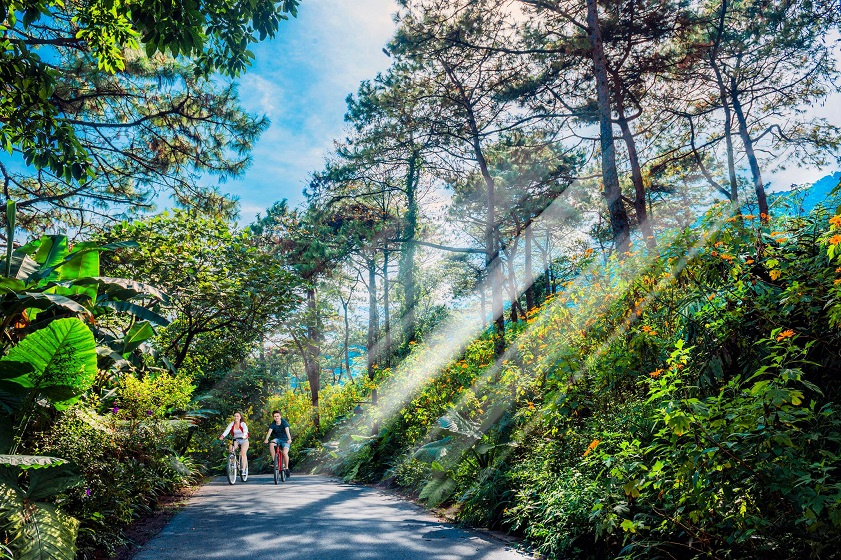
Explore breathtaking views on a Ba Vi National Park Trek
29 Aug, 2025
Ba Vi National Park is located in the Ba Vi Mountain Range, which lies within the Hanoi administrative region. The park spans over 10,000 hectares, covering a large portion of the Ba Vi district, which is part of Hanoi’s western outskirts. The park is named after Ba Vi, the mountain range that dominates the area, consisting of three main peaks: King Peak (1,296 meters), Silver Peak (1,226 meters), and Vua Peak (1,131 meters). Ba Vi offers visitors a chance to escape urban life and connect with nature. These peaks, rising dramatically above the surrounding landscape, form a breathtaking backdrop that is visible from various parts of Hanoi. The park itself is recognized for its diverse ecosystems, which include lush tropical forests, pristine streams, and rocky outcrops. It is an area of exceptional natural beauty that combines rich biodiversity with historical significance. Ba Vi is also home to several different climatic zones due to its elevation, ranging from subtropical at the base to temperate near the summit. This variety of climates makes the park an ideal habitat for a wide range of plant and animal species. Top 10+ Must-see Attractions in Ba Vi National Park The Deep Woodland The deep woodland in Ba Vi National Park is characterized by its rich biodiversity and dense forest cover. Located mainly at mid and high elevations, these forests are a blend of tropical and temperate ecosystems, due to Ba Vi's unique topography and climate. The woodlands are a mixture of evergreen trees, ferns, shrubs, and flowering plants, creating a dense and thriving environment that is home to various animal species. The Green Pine Forest The Ba Vi Pine Forest is one of the park’s most scenic spots. The tall pine trees and cool, fresh air create a peaceful environment perfect for a leisurely walk. The forest is home to a variety of wildlife, and you may even spot some deer or wild boar while exploring. Cactus Greenhouse The Cactus Greenhouse is a specially designed space that simulates the dry, arid conditions required for cacti and other desert plants to thrive. The greenhouse is maintained by the park authorities and serves as both a botanical exhibit and an educational space for visitors to learn about the diverse species of cacti and succulents from around the world. The greenhouse typically contains a variety of cacti species, from small decorative ones to larger, more towering varieties. It also houses other types of succulent plants that are adapted to survive in harsh, dry environments. These plants are usually native to arid regions such as deserts in Africa, the Americas, and the Middle East. The Ancient Church Near the French villas, you’ll find the ruins of an old French Church, built during the colonial era. Although the church is in a state of decay, its historical significance and the atmosphere surrounding the ruins make it a popular stop for visitors. It’s another reminder of Ba Vi’s colonial past, offering a unique perspective on the history of the area. Uncle Ho's Temple Uncle Ho's Temple (also known as Ho Chi Minh Temple) is a significant cultural and historical site dedicated to Ho Chi Minh, the beloved leader of Vietnam. This temple stands as a testament to the deep respect and admiration the Vietnamese people have for Uncle Ho, who played a pivotal role in the country's struggle for independence and reunification. Upper Temple (Den Thuong) The Upper Temple offers not only a deep cultural and spiritual experience but also some of the most stunning panoramic views of the surrounding landscapes. Visiting this temple is an essential part of the Ba Vi experience, as it beautifully combines history, nature, and spirituality. The architecture of “Den Thuong” is traditional Vietnamese, with elements reflecting the local culture and the region’s spiritual heritage. Bao Thien Tower Bao Thien Tower is one of the iconic landmarks of Ba Vi National Park, standing tall on King Peak (Vua Peak) at an elevation of 1,296 meters. It is a symbol of the park’s rich history and offers visitors not only a cultural insight but also breathtaking views of the surrounding landscape. Over the centuries, the tower has gone through several renovations and reconstructions. Though much of the original structure has been lost to time, the current Bao Thien Tower still stands as a testament to Vietnam’s historical architecture and religious heritage. Ngoc Hoa Stream Ngoc Hoa Stream is located in the heart of Ba Vi National Park, a sprawling natural reserve just outside of Hanoi. The stream is nestled among the dense woodlands of Ba Vi, which is famous for its biodiversity and towering mountains. It flows through a relatively untouched area of the park, making it a popular destination for nature lovers, photographers, and anyone seeking tranquility. Thien Son Suoi Nga Thien Son Waterfall is a beautiful natural feature located in the southern part of Ba Vi National Park. The waterfall cascades through the lush forest, creating a tranquil atmosphere. It’s a short hike from the parking area, making it a great destination for those looking for a peaceful nature experience. Ruins of Political Prison Located within the park’s lush forests and dramatic mountain scenery, these ruins stand as a reminder of the dark chapter in the country’s history, particularly during the French colonial period and the Vietnam War. The site once housed political prisoners who were detained by the French colonial administration, and later by the Vietnamese government during the war. Today, it serves not only as a historical site but also as a symbol of the resilience and endurance of the Vietnamese people. The site was used by the French colonial government to imprison political dissidents, revolutionaries, and nationalists who opposed their rule. The prison was built on the rugged, secluded hills of Ba Vi Mountain to keep prisoners isolated and away from any outside influence. 600 Blockhouses These blockhouses are most famously linked to their role during the Vietnam War, when they were used as part of the defense against American military forces. The 600 Blockhouses were spread throughout the Ba Vi region and served both as shelters for the Vietnamese soldiers and as lookout points to monitor enemy movements. The region, with its rugged terrain and dense forests, provided the perfect camouflage and fortification for these structures. Ways To Get To Ba Vi National Park from Hanoi By Private Vehicle Driving to Ba Vi National Park is the most convenient and flexible option, especially if you’re traveling with family or friends. The journey takes approximately 1.5 to 2 hours, depending on traffic, and offers a comfortable ride through scenic countryside. From Hanoi, particularly from central areas like Ba Dinh District Hanoi, visitors take the Thang Long Boulevard (National Road 32) heading west then follow the signs to Ba Vi District. When you reach the Ba Vi district, turn towards the park entrance. You’ll be able to follow the signs leading directly to Ba Vi National Park. By Taxi If you're looking for a direct, private, and convenient mode of transportation, a taxi or ride-hailing service can be a good option. It’s more expensive than taking the bus or public transportation, but it offers door-to-door service and the comfort of a private vehicle. By Bus There are regular buses from Hanoi to Ba Vi, and this is a budget-friendly option for those who prefer not to drive. You can get the bus route 20B, route 71, route 74, route 77. The bus journey takes around 1.5 to 2 hours. Travel Tips for Ba Vi National Park Here are some useful tips for traveling in ecological areas like Ba Vi, Pu Luong, or other nature destinations: Wear suitable clothing: Choose comfortable, weather-appropriate clothes and sturdy shoes for walking on uneven terrain. Bring essentials: Carry water, snacks, insect repellent, a hat, and a small trash bag to keep the area clean. Respect nature and culture: Avoid damaging plants or disturbing wildlife and interact politely with local communities. Visit at the right season: Travel during the dry season for trekking and the rice harvest or blooming periods for the best scenery. Choose proper transportation: Motorbikes, self-driving cars, taxis, or buses are all options; stay cautious on winding mountain roads. Select suitable accommodation: Stay in homestays for cultural immersion or resorts/bungalows for comfort near nature. Use a map or navigation app: Helps you find trails, attractions, and avoid risky areas. Prioritize safety: Never trek alone in deep forests or difficult paths and inform hosts or park staff about your plans. Ba Vi National Park is more than just a scenic escape—it’s a journey into Vietnam’s natural beauty, history, and culture. From trekking through lush forests and exploring waterfalls to visiting historical sites and temples, every corner offers a unique experience. By practicing sustainable travel, visitors can enjoy the park responsibly, preserving its environment and supporting local communities. Whether seeking adventure, relaxation, or a deeper connection with nature, Ba Vi promises unforgettable memories and a peaceful retreat from the city’s hustle.
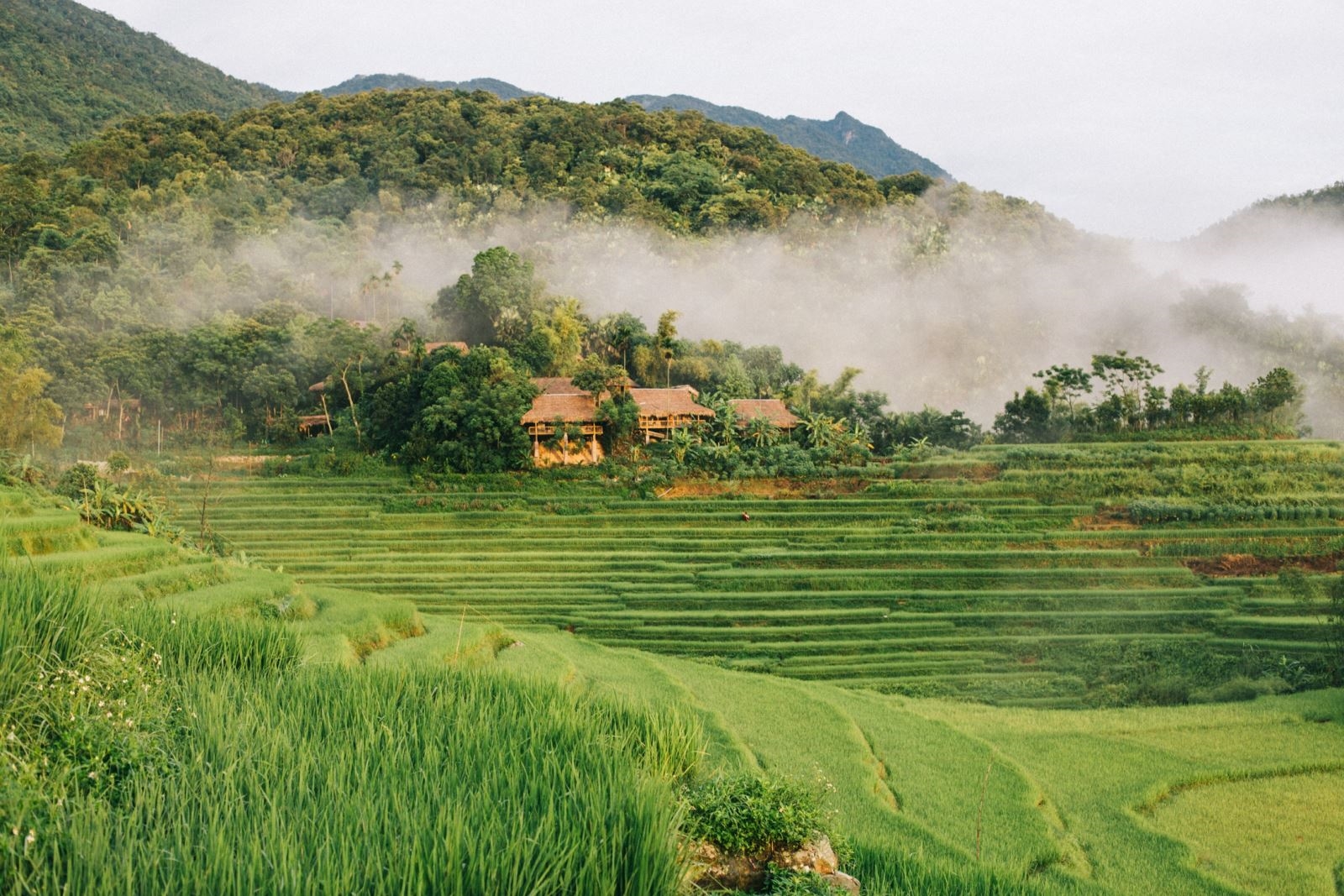
Pu Luong nature retreat: A journey into eco-friendly exploration and local culture
29 Aug, 2025
The beauty of Pu Luong captivates with its rare, untouched landscapes, showcasing the majestic nature of Vietnam. The area is home to many unique species of flora and fauna, including the white-cheeked langur, a distinctive symbol of the region. Beyond its natural charm, Pu Luong preserves the traditional culture of the Thai and Muong people, from rustic stilt houses to intricate handicrafts. Visitors can enjoy trekking through Pu Luong’s forests, peaceful boat rides on the Cham Stream, or exploring fascinating cave systems. Walking through Thai villages and participating in local festivals provides unforgettable moments, all while practicing sustainable travel by respecting local communities and the environment. For those planning a trip, the best time to visit is from May to June or September to October, when the terraced fields turn golden, creating a picturesque landscape. Pu Luong not only offers an escape from the hectic pace of life but also opens up a peaceful, close-to-nature, and poetic world amid Vietnam’s mountains. Best Time to Visit Pu Luong According to many travel enthusiasts, the dry season from April to October is the ideal time to visit Pu Luong. The stable weather and minimal rainfall make it perfect for trekking, exploring villages, and eco-tourism. In particular, two periods are highly recommended: Late May to early June: The rice fields turn golden, forming a vibrant countryside scene full of color. September to October: The rice fields are lush green, offering a peaceful and fresh atmosphere. To make the most of the trip, it is important to prepare appropriate clothing, hiking shoes, and personal essentials. Such small details will help you apply Pu Luong travel tips practically and safely. Getting to Pu Luong Pu Luong is about 160 km from Hanoi, and there are several travel options: Bus: From Hanoi, buses depart from My Dinh or Giap Bat to Thanh Hoa, then continue by local bus or taxi to Pu Luong. Limousine: For those who prefer comfort and door-to-door service, ideal for friends or families. Car or Motorbike: For independent travelers, self-driving offers a memorable experience. However, be cautious on winding mountain roads. Regardless of the transportation method, always check the weather and plan your route in advance. This is an essential part of following Pu Luong travel tips shared by previous visitors. Accommodation in Pu Luong Pu Luong offers a variety of lodging options to suit all needs and budgets: Homestays: Popular for those wishing to immerse themselves in local life and culture. Usually located in villages, built in traditional architecture, offering a cozy and intimate atmosphere. Resorts: For luxury and convenience, resorts like Pu Luong Retreat, Pu Luong Eco Garden, and Pu Luong Natura offer pools, spas, restaurants, and more. Bungalows: A blend of homestay and resort, providing privacy while being close to nature. Often built with natural materials such as wood, bamboo, or rattan, giving a warm and eco-friendly feeling. Must-See Spots in Pu Luong With its pristine landscapes and unique culture, Pu Luong is ideal for a complete travel experience. Key destinations include: Kho Muong Village: Home to the Thai people, offering peaceful terraced fields and traditional stilt houses. Perfect for community-based tourism and cultural exploration. Kho Muong Cave (Bat Cave): Near Kho Muong Village, this mysterious cave features beautiful stalactites and is home to thousands of bats—ideal for nature enthusiasts. Don Village: Famous for lush green terraces and tranquil life, perfect for immersing in local culture and mountain scenery. Hieu Waterfall: A small waterfall in the forest creating a picturesque scene, ideal for relaxation and connecting with wild nature. Son - Ba - Muoi Villages: A cluster of three highland villages above 1,000 meters, with cool weather and stunning terraced fields. Visitors are often impressed by the traditional culture and hospitality. Pu Luong Peak: Known as the “roof of Pu Luong,” it attracts trekkers seeking challenging climbs with rewarding panoramic views from 1,700 meters. Pho Doan Market: Held on Thursday and Sunday mornings, offering a glimpse of local culture through specialties, traditional costumes, and handicrafts. Cham Stream: Clear forest streams providing refreshing experiences, including bamboo raft rides—a must-try activity. Local Cuisine in Pu Luong Pu Luong is not only known for its majestic landscapes but also for its unique highland cuisine: Com Lam: A traditional Thai dish made from sticky rice cooked in bamboo tubes over charcoal, offering a gentle aroma and natural sweetness. Hill Chicken: Free-range chickens raised on hillsides, known for firm and flavorful meat. Popular dishes include grilled chicken with mac mat leaves, steamed chicken with lemongrass, and salted fried chicken. Co Lung Duck: A renowned Pu Luong specialty, with tender, sweet meat and no unpleasant odor. Common preparations include roasted duck over charcoal, braised duck with dracontomelon, and duck stewed in fermented tofu. Pu Luong is more than a destination for admiring majestic mountains; it is a journey into unique culture and local Vietnamese specialties. From trekking through forests and wandering traditional villages to savoring local specialties such as com lam, hill chicken, and Co Lung duck, each experience is intimate and fulfilling. A trip to Pu Luong opens up a peaceful, rustic, and poetic world, connecting people with nature and creating unforgettable memories in the heart of Vietnam’s mountains.
Experiences & Activities

Mekong Delta - Vinh Trang Pagoda full-day tour
1 day
On this Vung Tau tour, start by relaxing at the beautiful Vung Tau Beach, where you can soak up the sun and enjoy the gentle sea breeze. Next, visit the iconic Christ the King Statue, a must-see landmark offering stunning views of the surrounding area. Continue to the Whale Temple (Den Ca Ong), a spiritual site rich in local culture and history. Explore the historic White Palace (Bach Dinh), a former residence of French governors that showcases remarkable architecture. Finally, end your day at Nghinh Phong Cape, where you can admire panoramic views of the sea and capture unforgettable photos of the coastline.

A romantic adventurous Vietnam journey in 10 days 9 nights
10 days 9 nights
Embark on a captivating 10-day odyssey through Vietnam, perfectly curated for couples seeking both profound cultural immersion and exhilarating adventure. This journey weaves together the ancient charm of Hanoi with the mystical karst landscapes of Halong Bay, offering an overnight cruise under a starlit sky. Discover the imperial grandeur of Hue and the timeless allure of Hoi An, where lantern-lit nights and riverside tranquility set the scene for romance. Venture into the vibrant Mekong Delta, exploring its floating markets and lush waterways.

5D4N_Hanoi_Halong on cruise exploration
5 days 4 nights
This 5 days journey brings you through the best of Northern Vietnam: the cultural charm of Hanoi, the breathtaking landscapes of Halong Bay, and the serene beauty of Ninh Binh. Guests will enjoy a luxury overnight cruise, visit magnificent caves, kayak among limestone mountains, relax on the sundeck at sunset, and savor premium onboard cuisine. The tour is perfect for travelers seeking both relaxation and immersive nature experiences.

Unique Vietnam local 6 days 5 nights
6 days 5 nights
This 6-day journey takes travelers through Hanoi, Halong Bay, Ninh Binh, and Mai Chau, offering a rich blend of cultural and natural experiences. Highlights include a relaxing massage, a Hanoi city tour, a 4–5-star Halong cruise, a Tam Coc – Thung Nham boat trip, and trekking in the Mai Chau valley. Guests will visit famous landmarks such as Sung Sot Cave, Titov Island, Bai Dinh Pagoda, the Old Quarter, and traditional Thai ethnic villages. The itinerary harmonizes relaxation, exploration, culture, and local cuisine. An ideal choice for travelers seeking a complete Northern Vietnam experience in one trip.
![[S.I.C] Yen Duc village overnight: 2 days 1 night](https://ilooca-tourdb.itourism.vn//files/thumb/408/285/uploads/content/22732/693019f1c8fd3.png)
[S.I.C] Yen Duc village overnight: 2 days 1 night
2 days 1 night
This 2 day 1 night trip includes a nice stay in Viet House, unique village retreat accommodation, surrounded by rice fields in Yen Duc village. Cycling to discover peaceful village, talking with local people and visit their family house should amaze you with lots of cultural sense and fun. Besides that, joining local activities (fishing, gardening, visiting the culture house of village, local market…) bring you close to real experience of a farmers, taste delicious homemade Vietnamese food then enjoy peaceful life in countryside of Vietnam.

The perfect 3 days Sapa tour
3 days 2 nights
Prepare to be captivated by a journey where mist-shrouded peaks meet vibrant cultural tapestries. This 3-day, 2-night escape from Hanoi plunges you into the heart of Sapa's unparalleled beauty. Imagine tracing the contours of iconic terraced rice fields, a masterpiece sculpted by generations, and breathing in the crisp mountain air. Beyond the breathtaking panoramas, you'll connect intimately with the resilient ethnic minorities – the H'Mong people – in their traditional villages, witnessing ancient customs and intricate handicrafts firsthand.
Keep exploring
Top things to do in Sustainable Travel
FAQs
